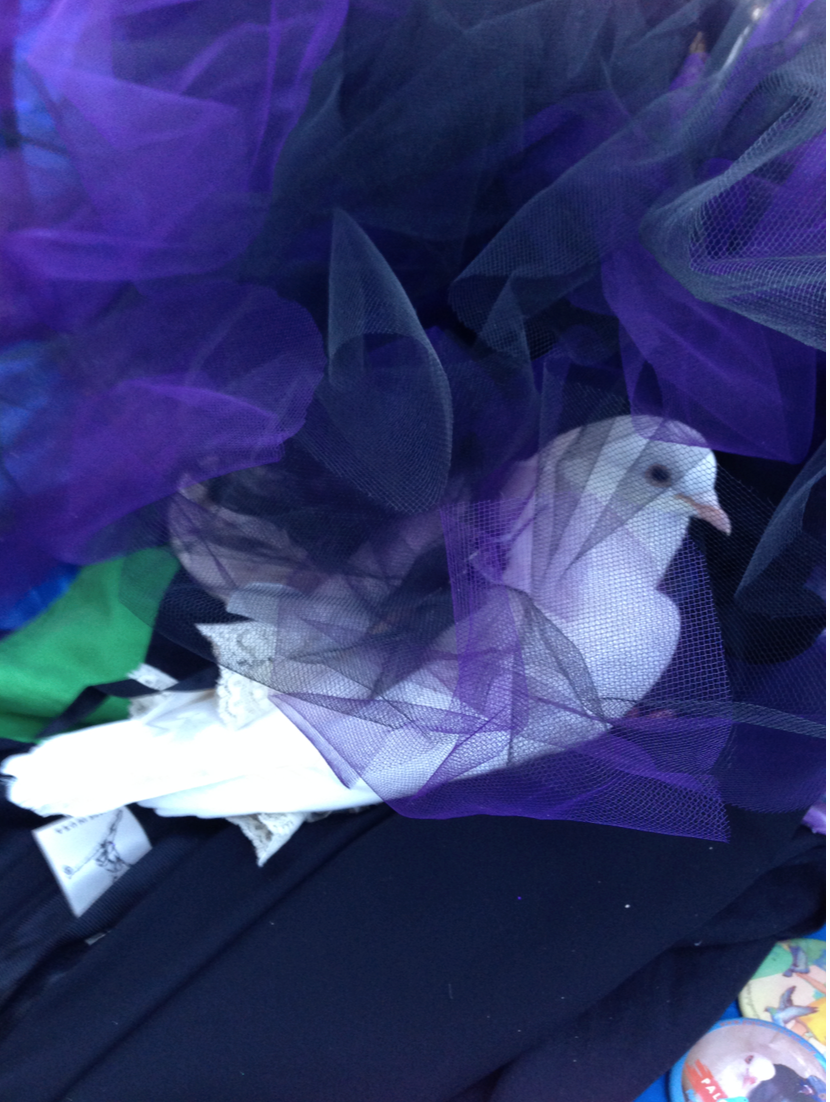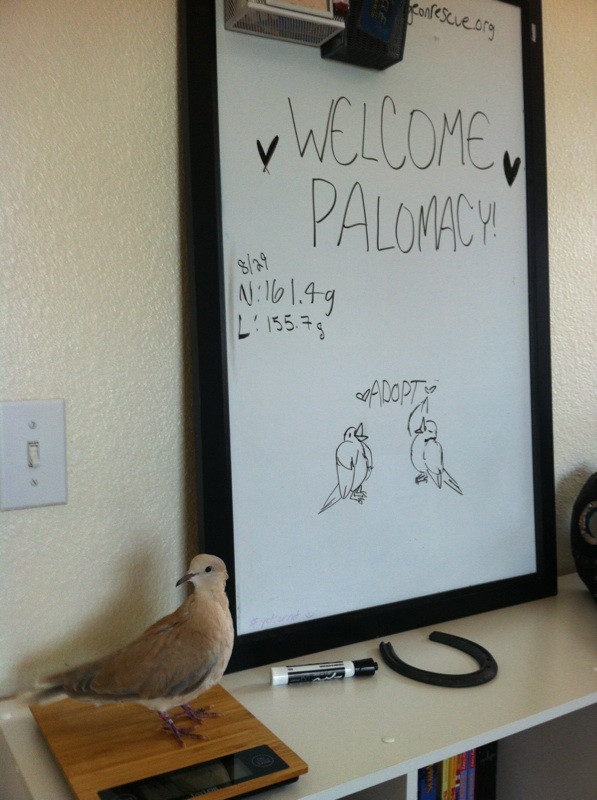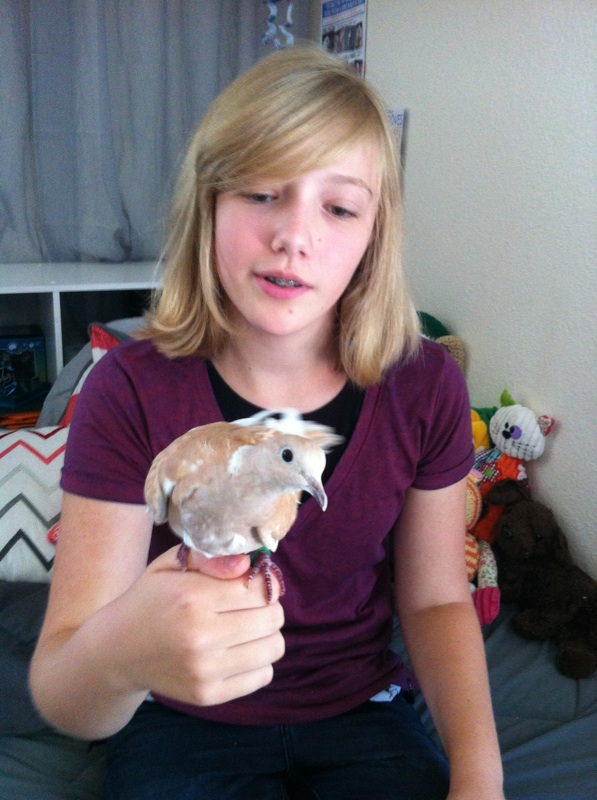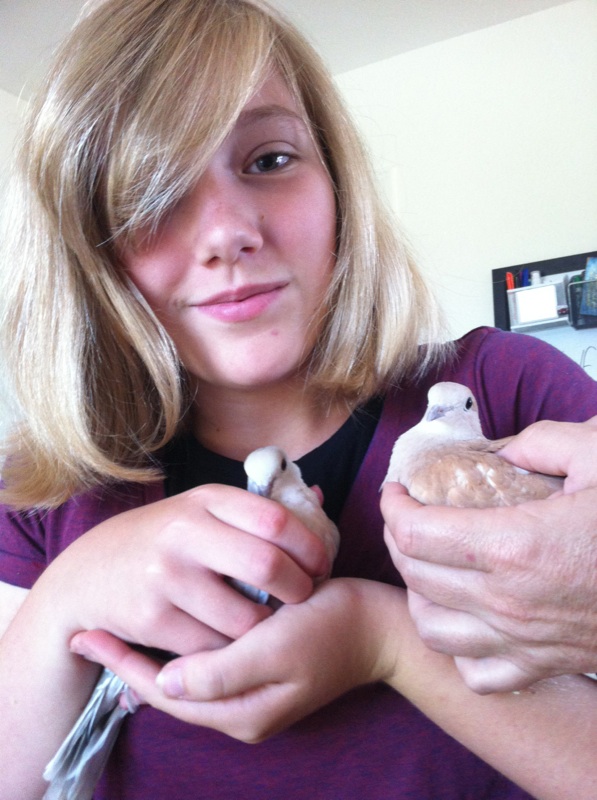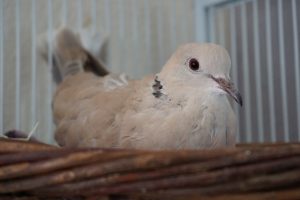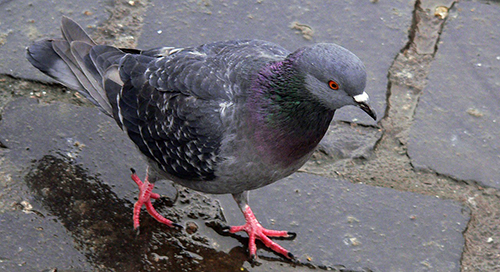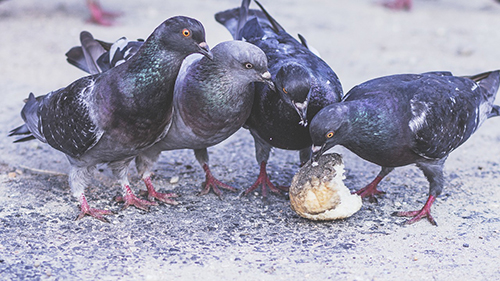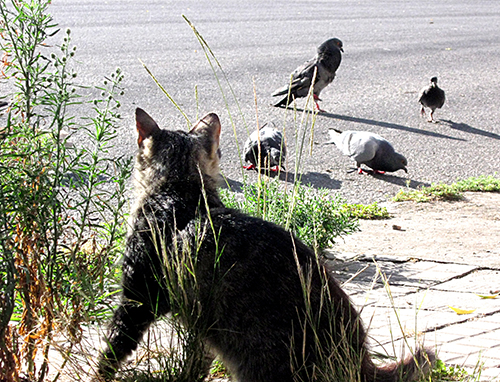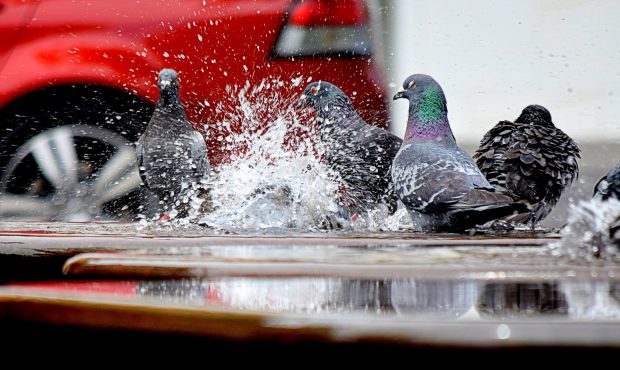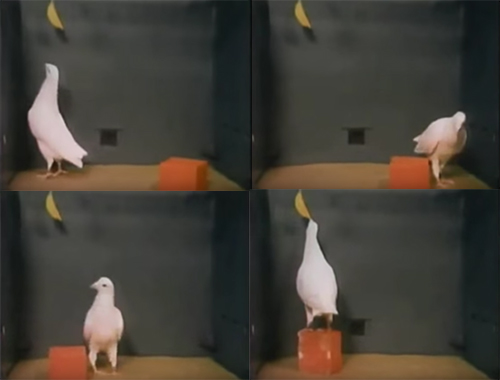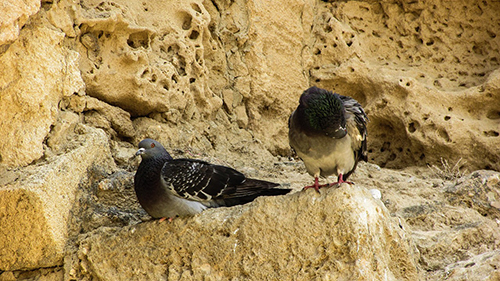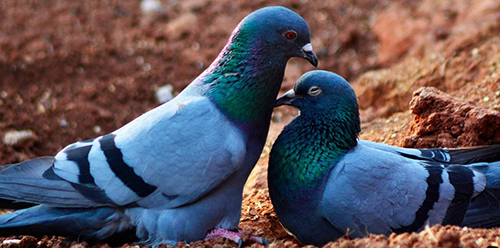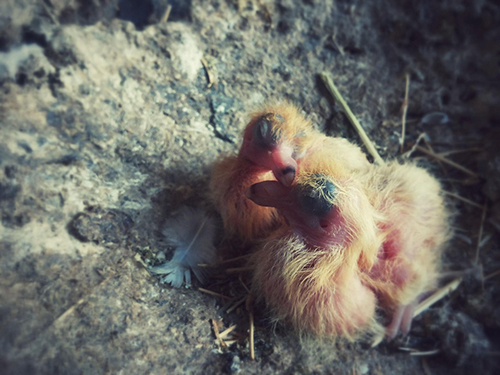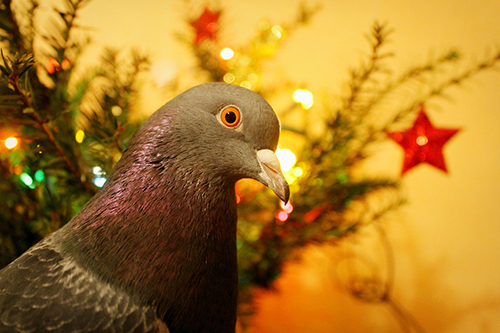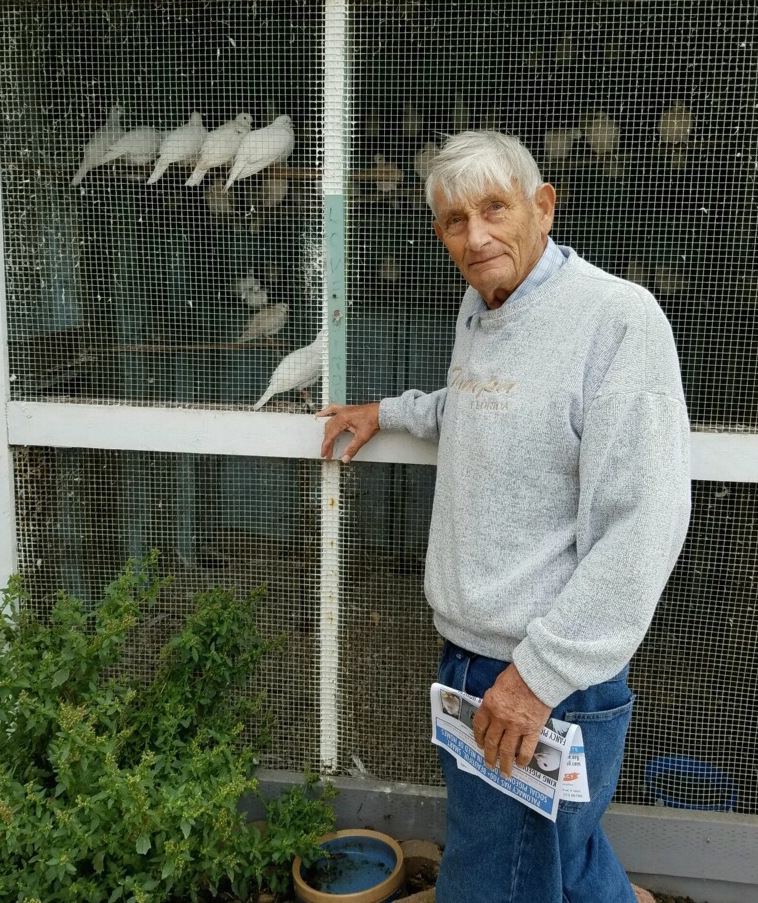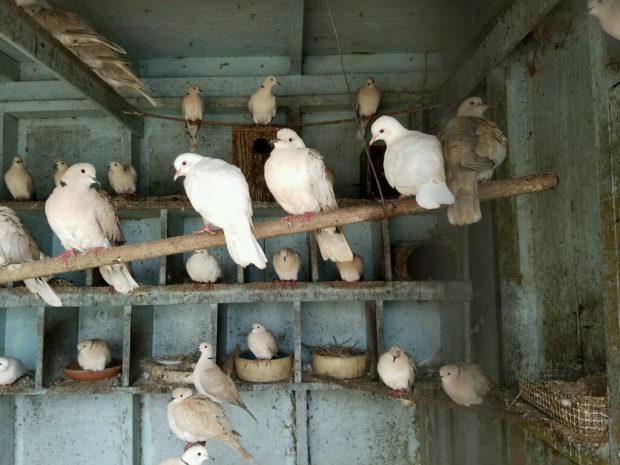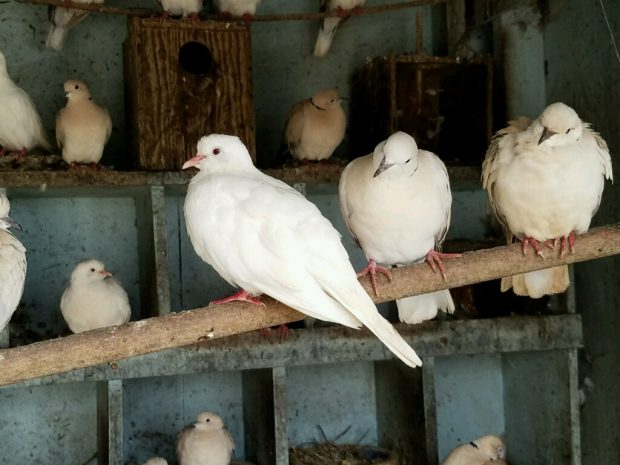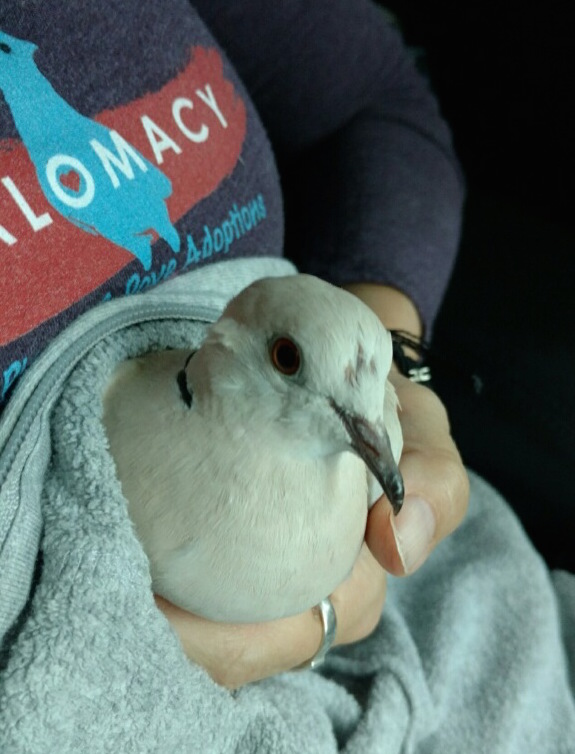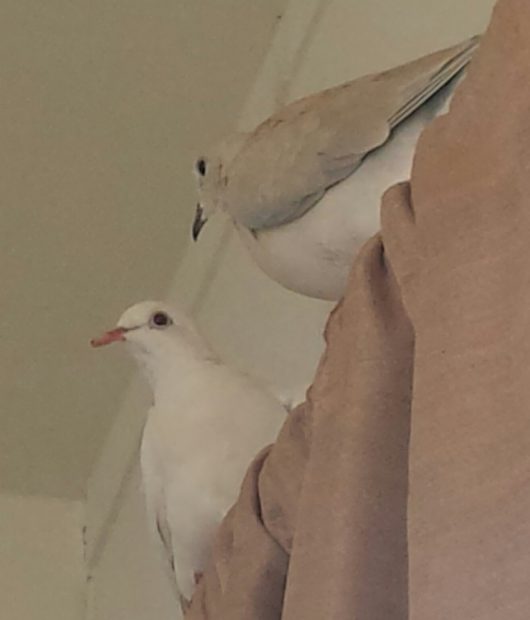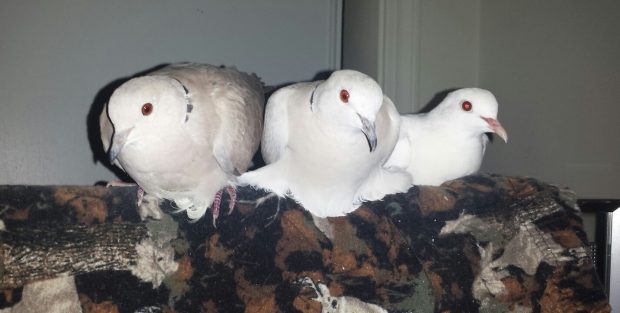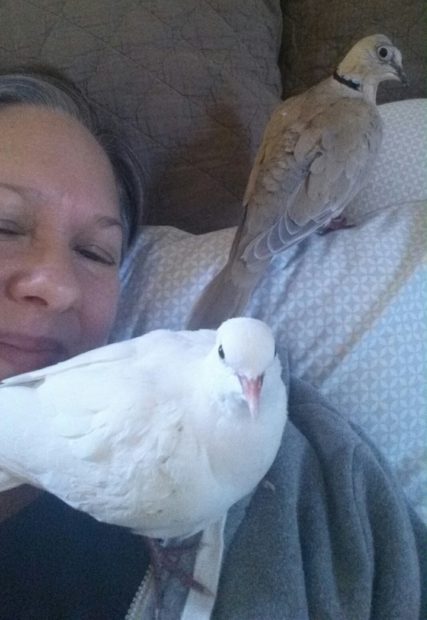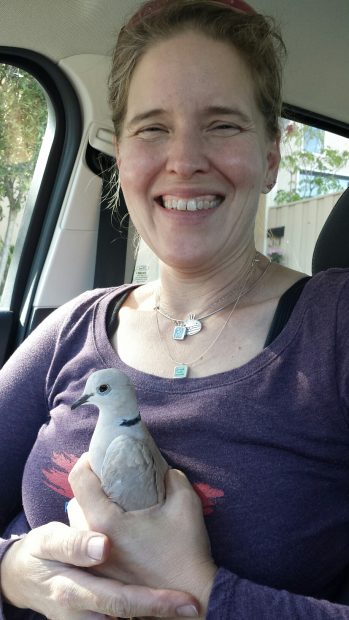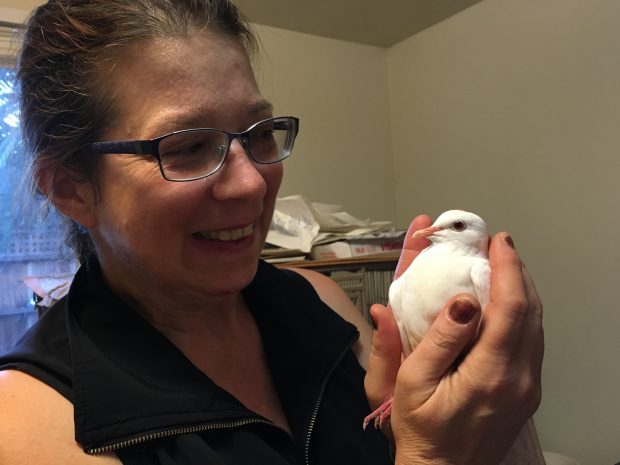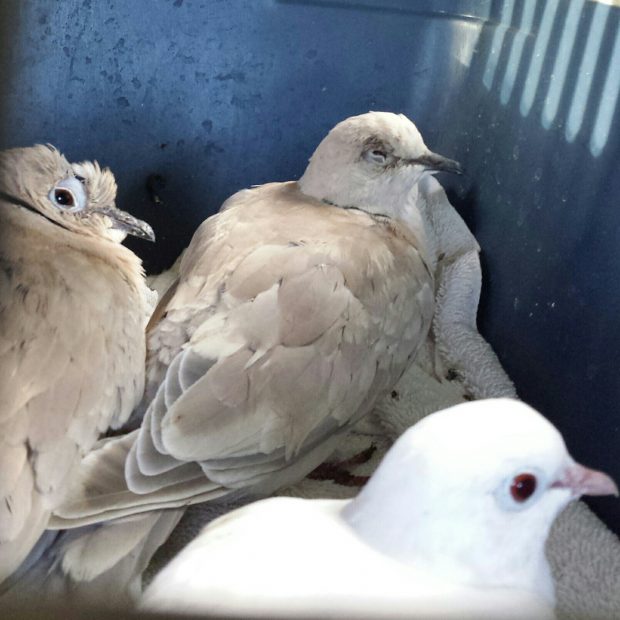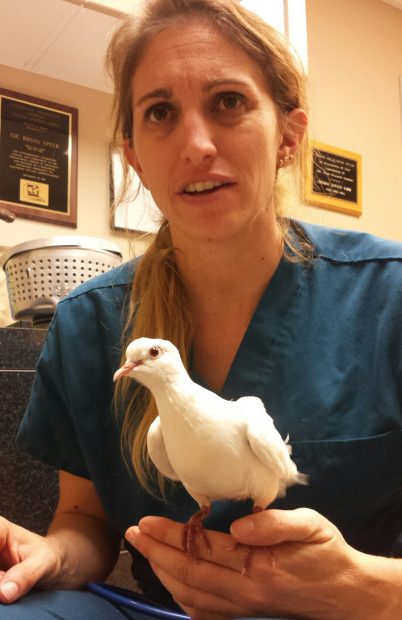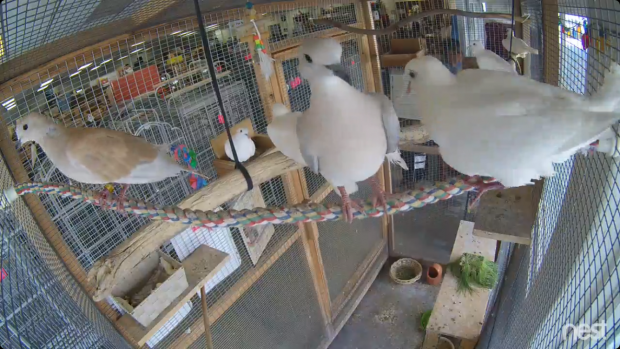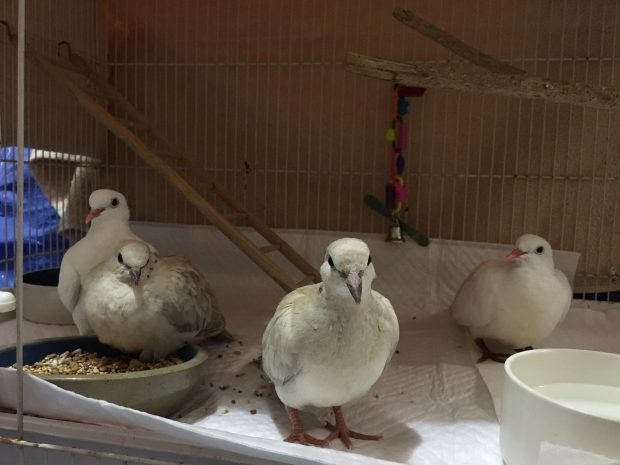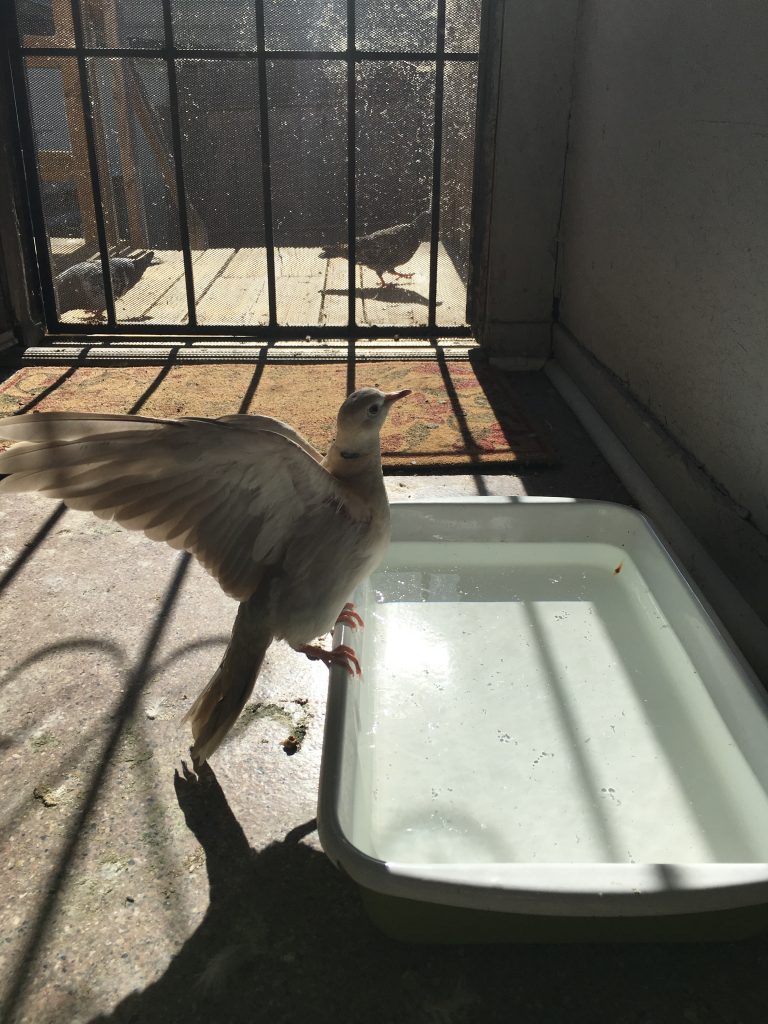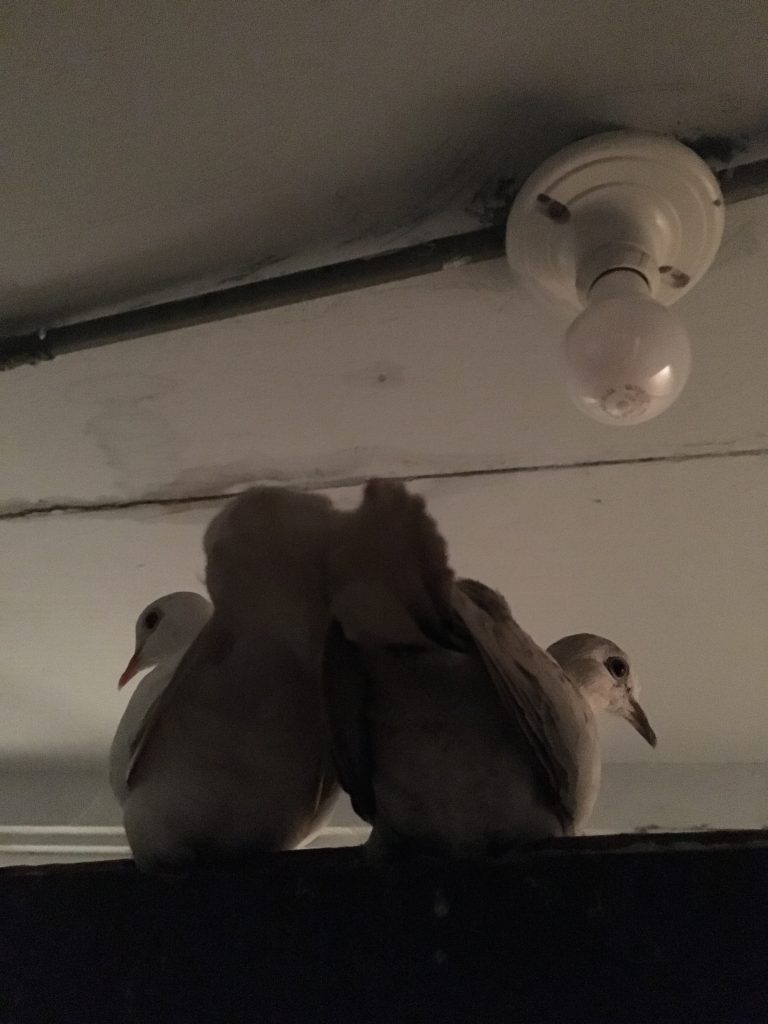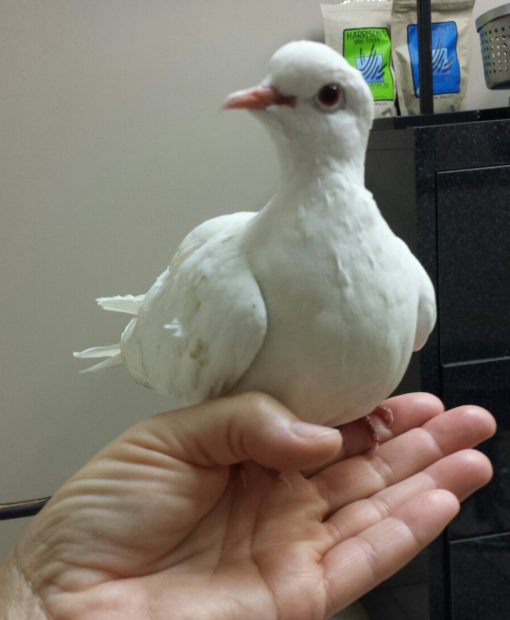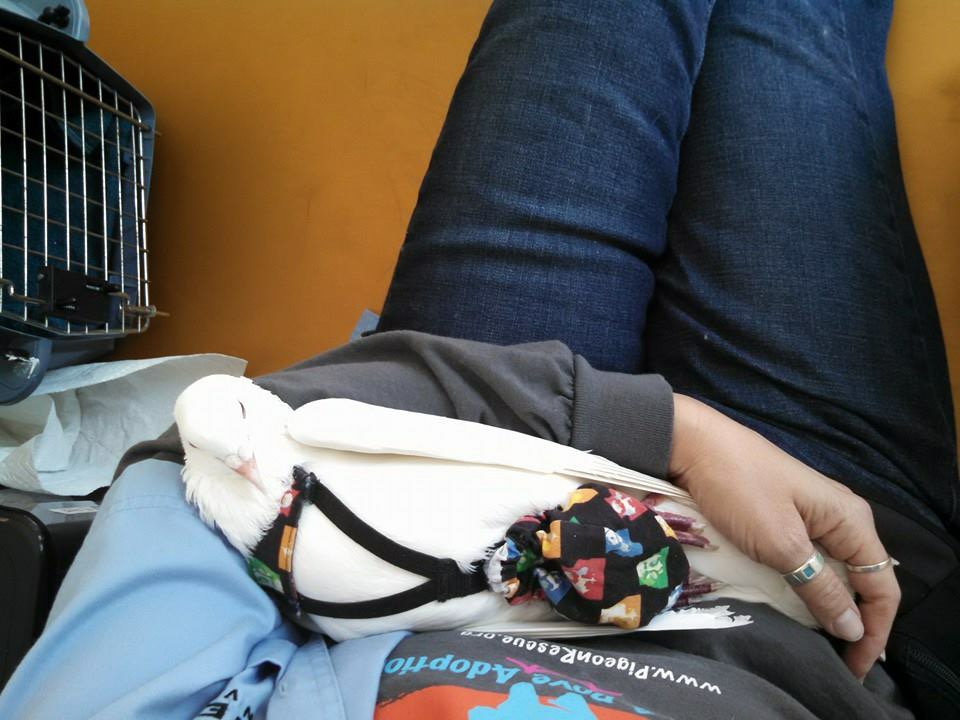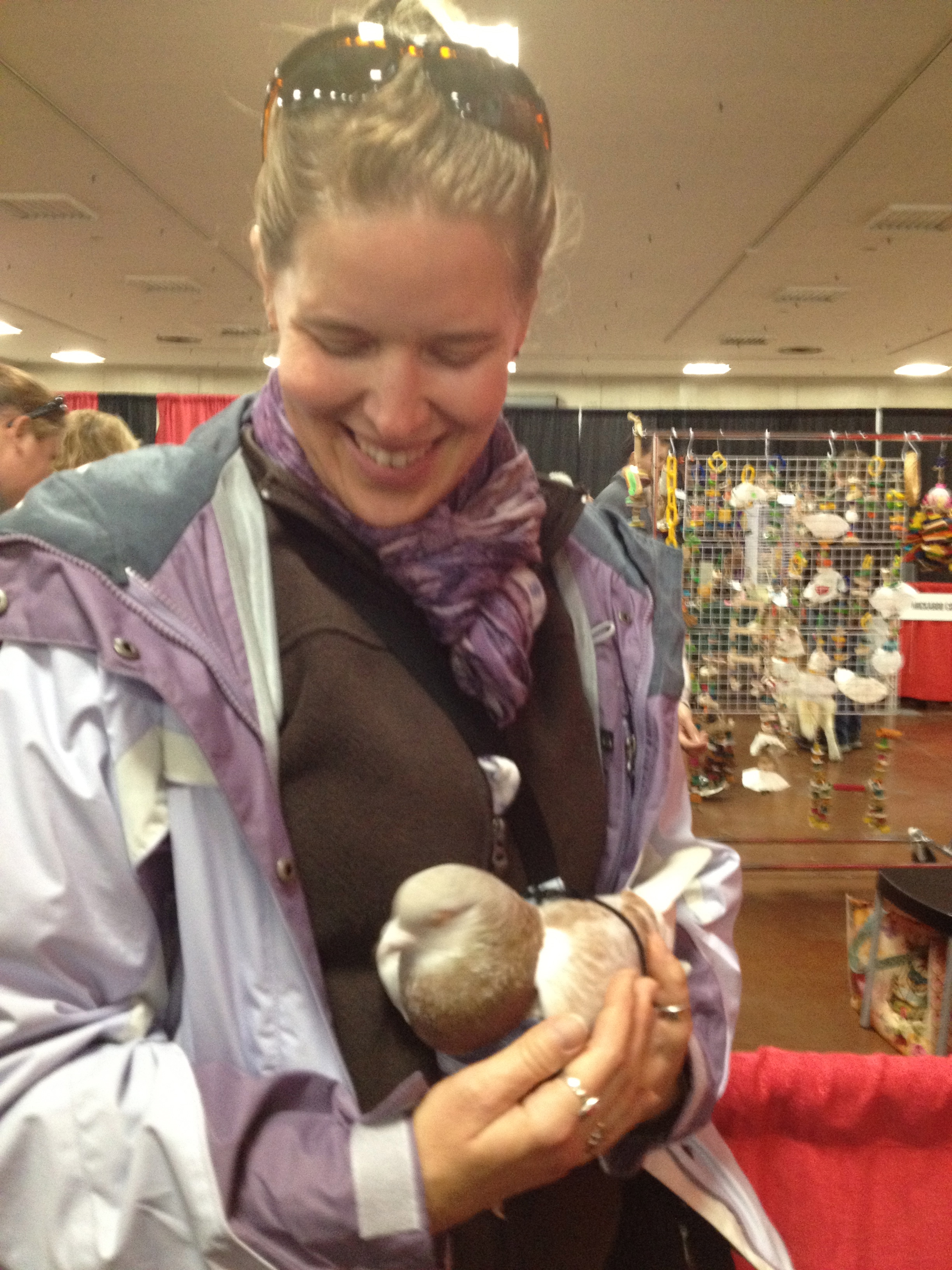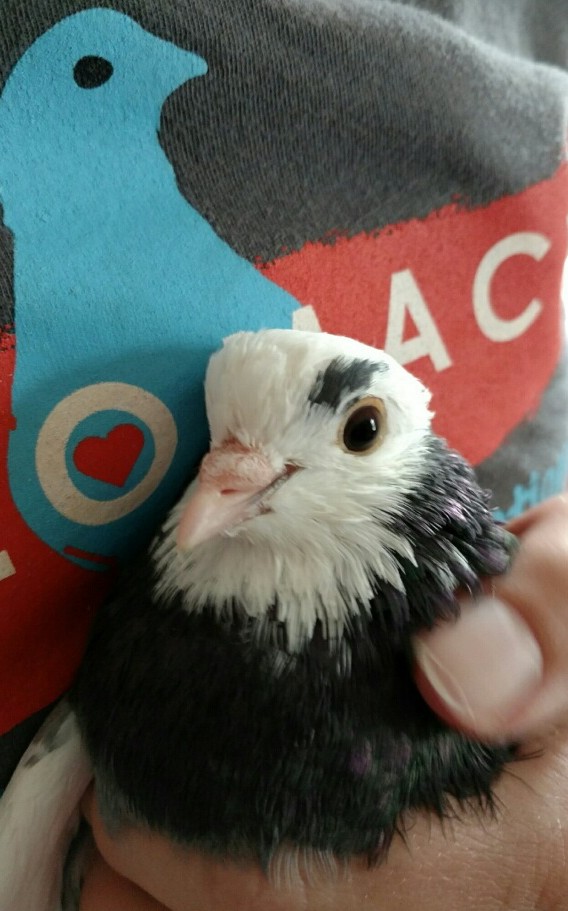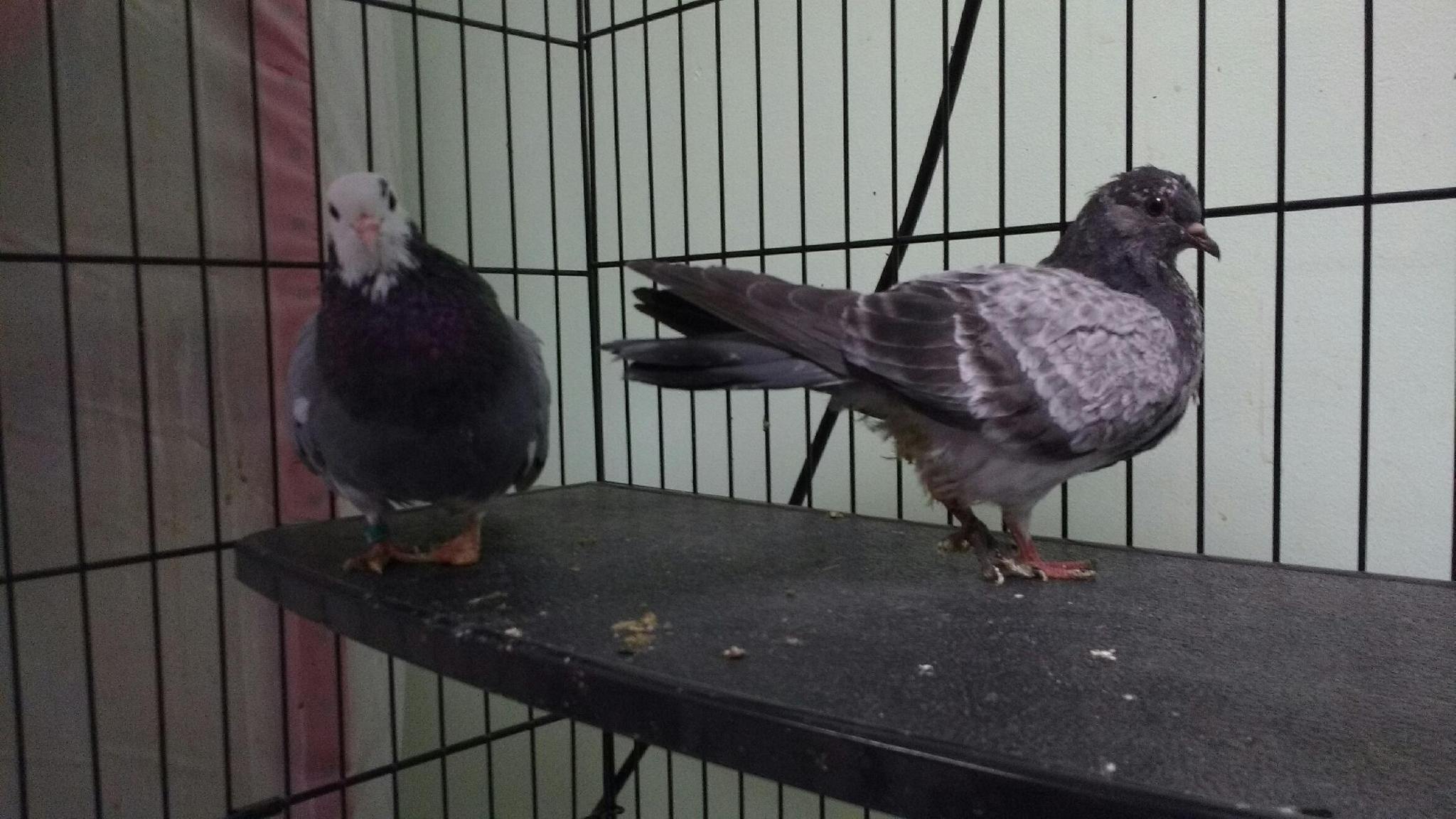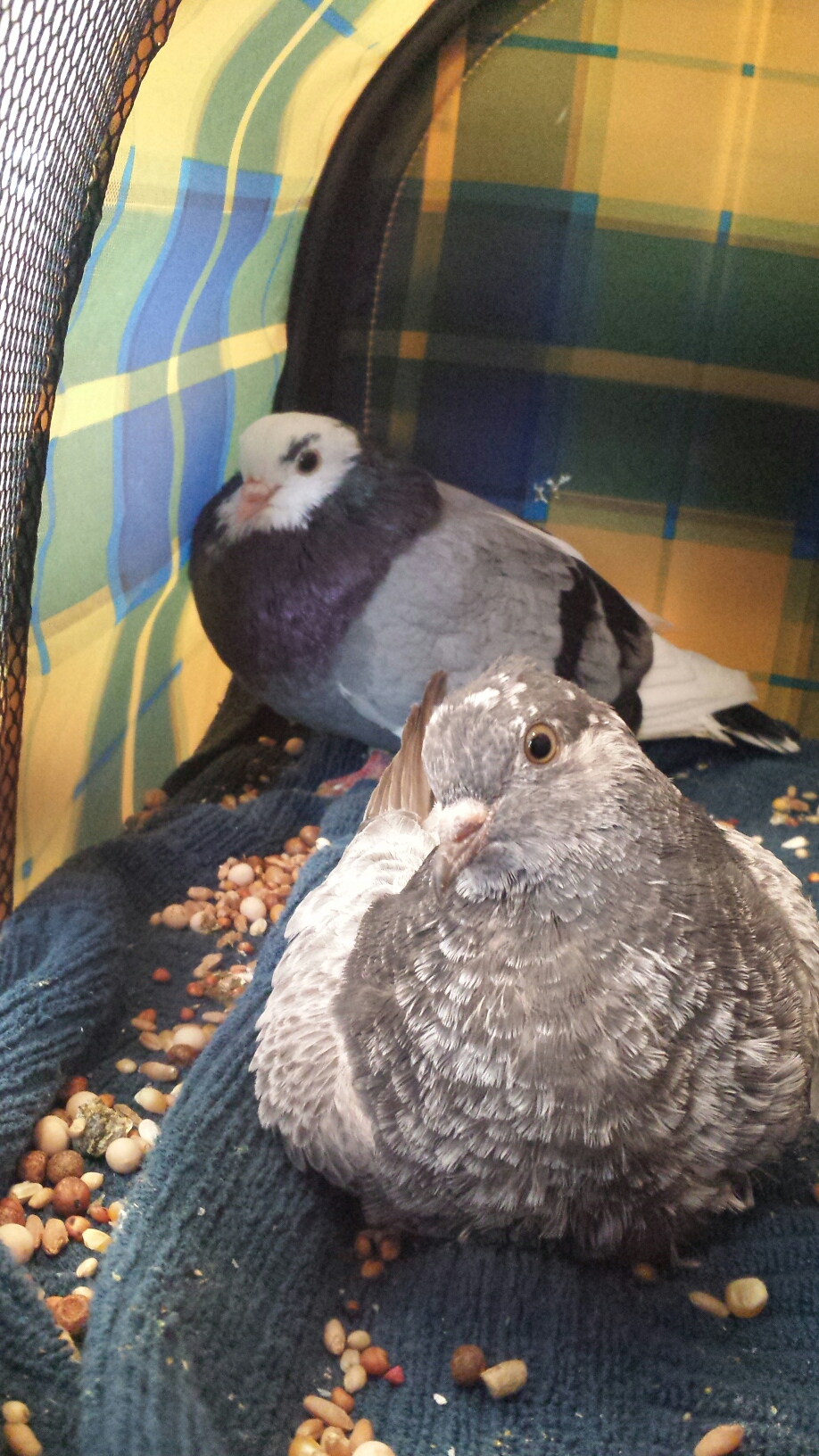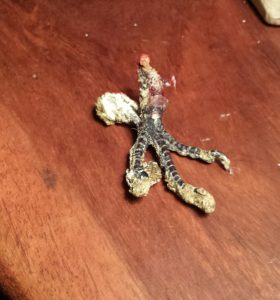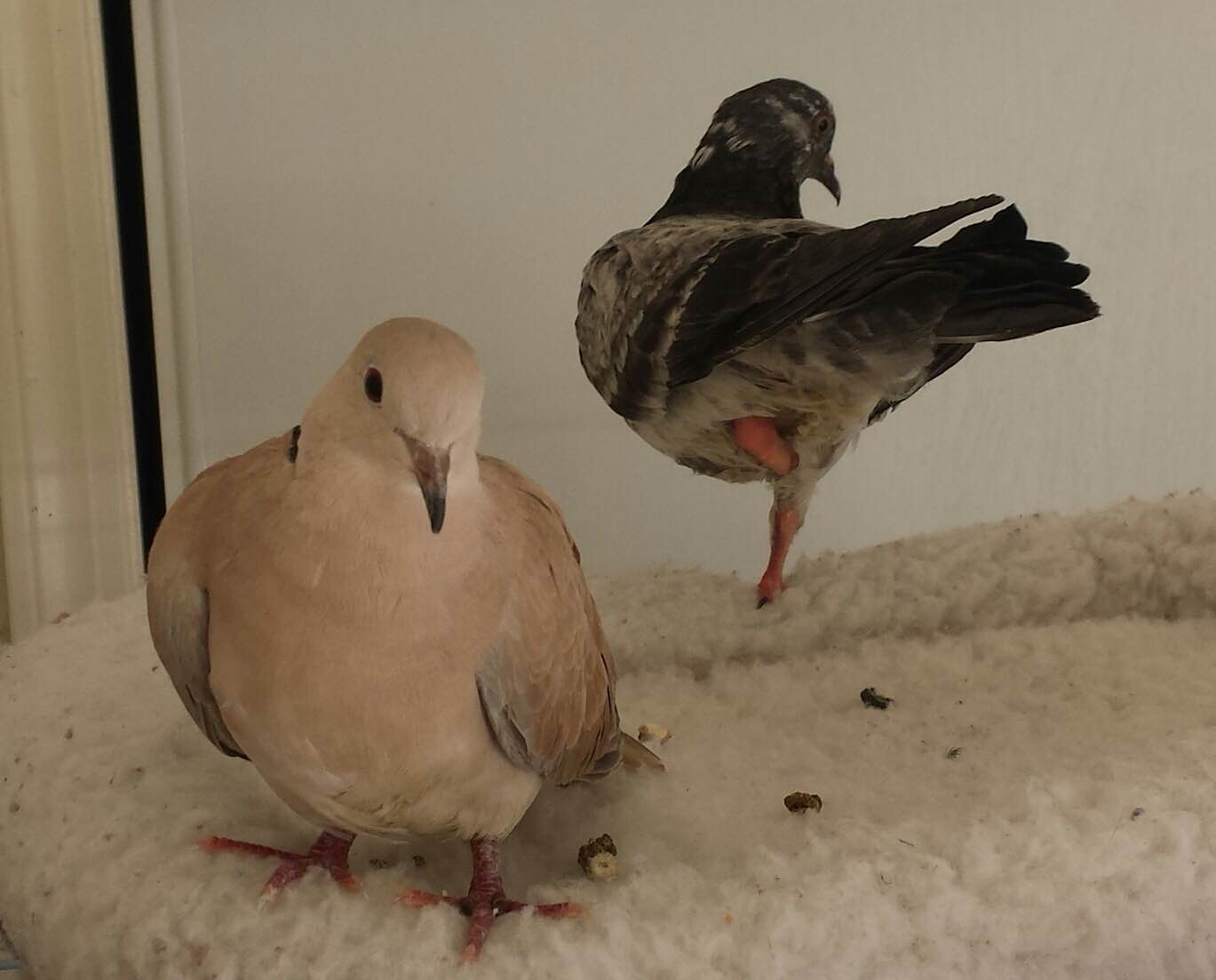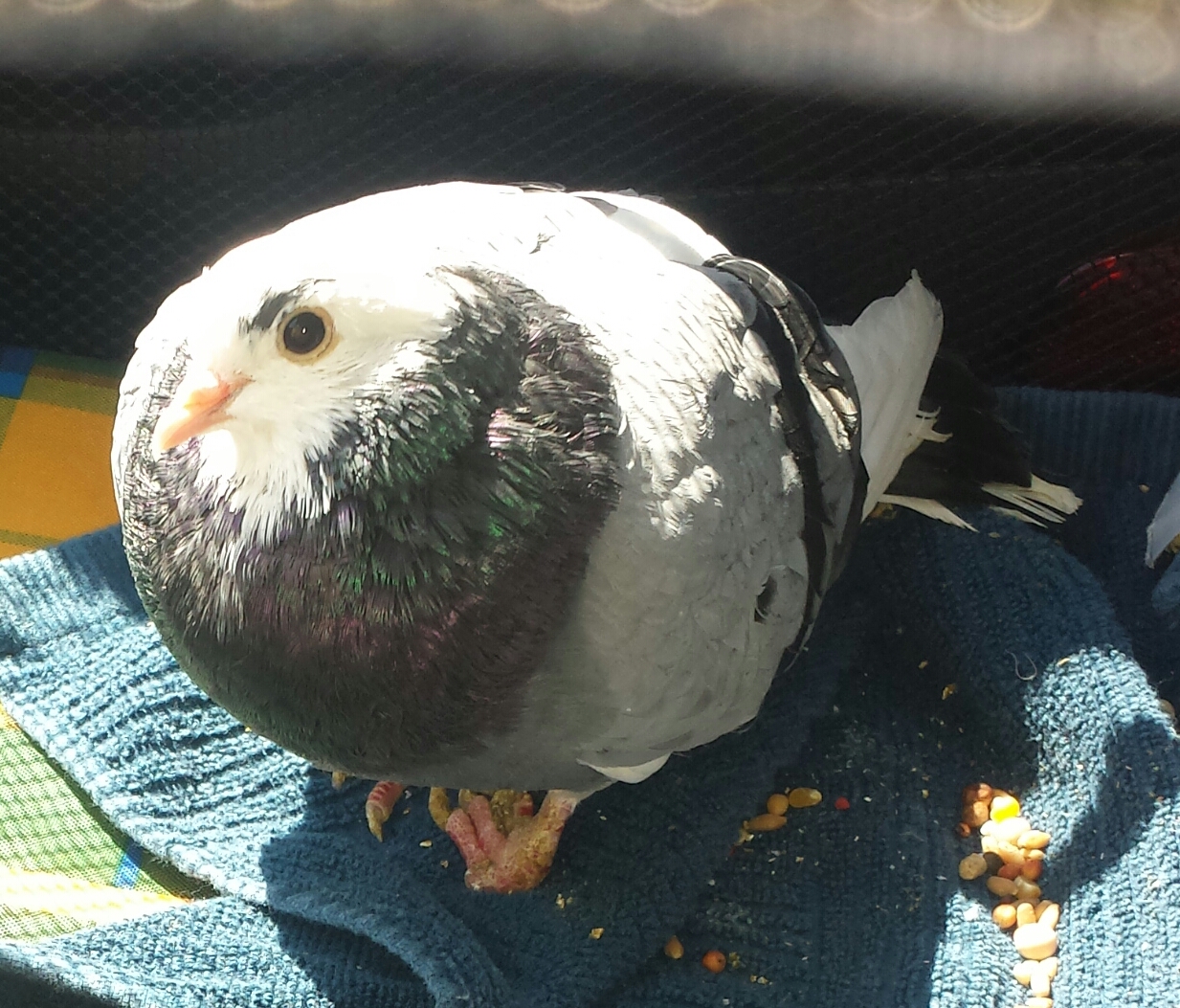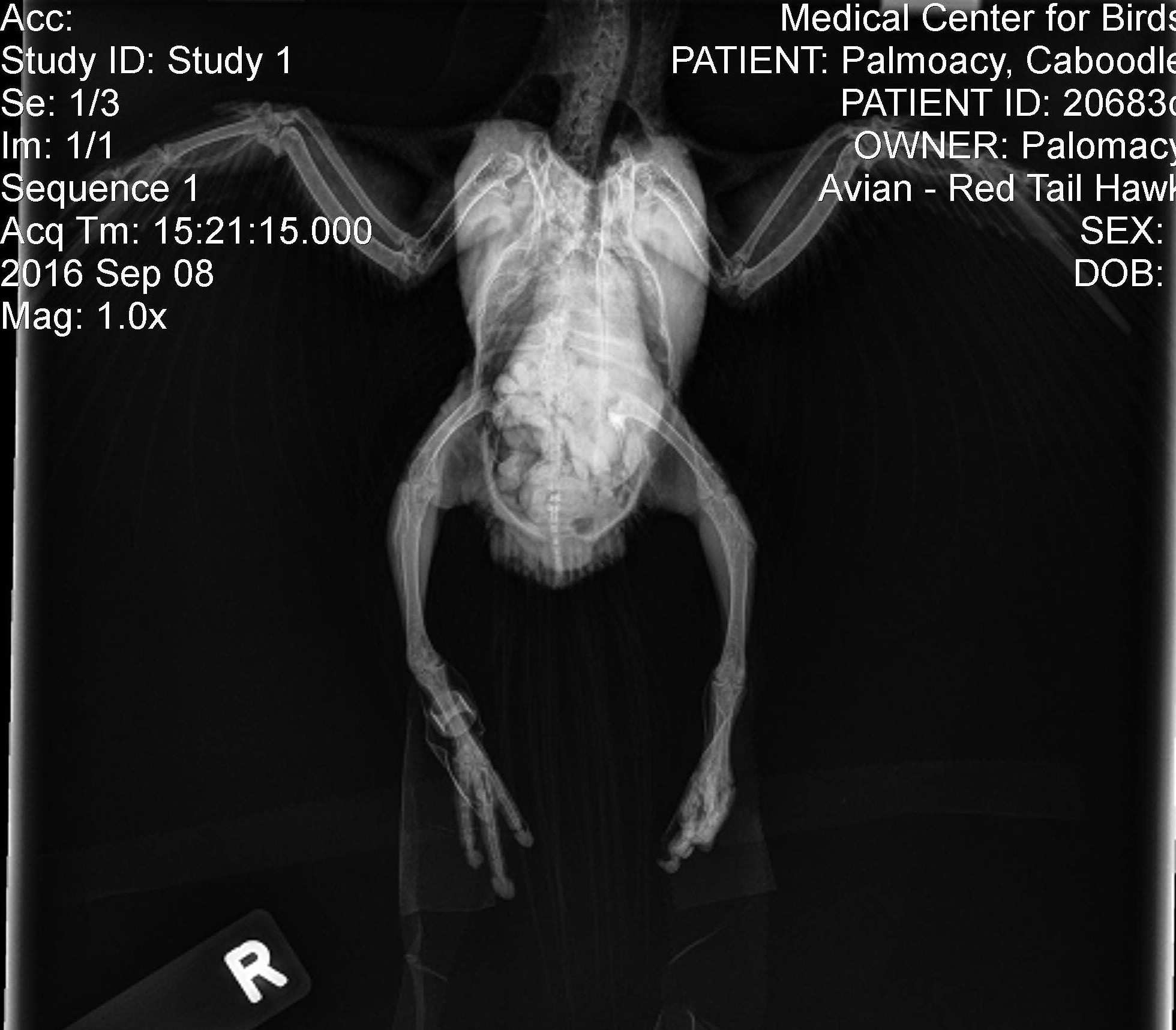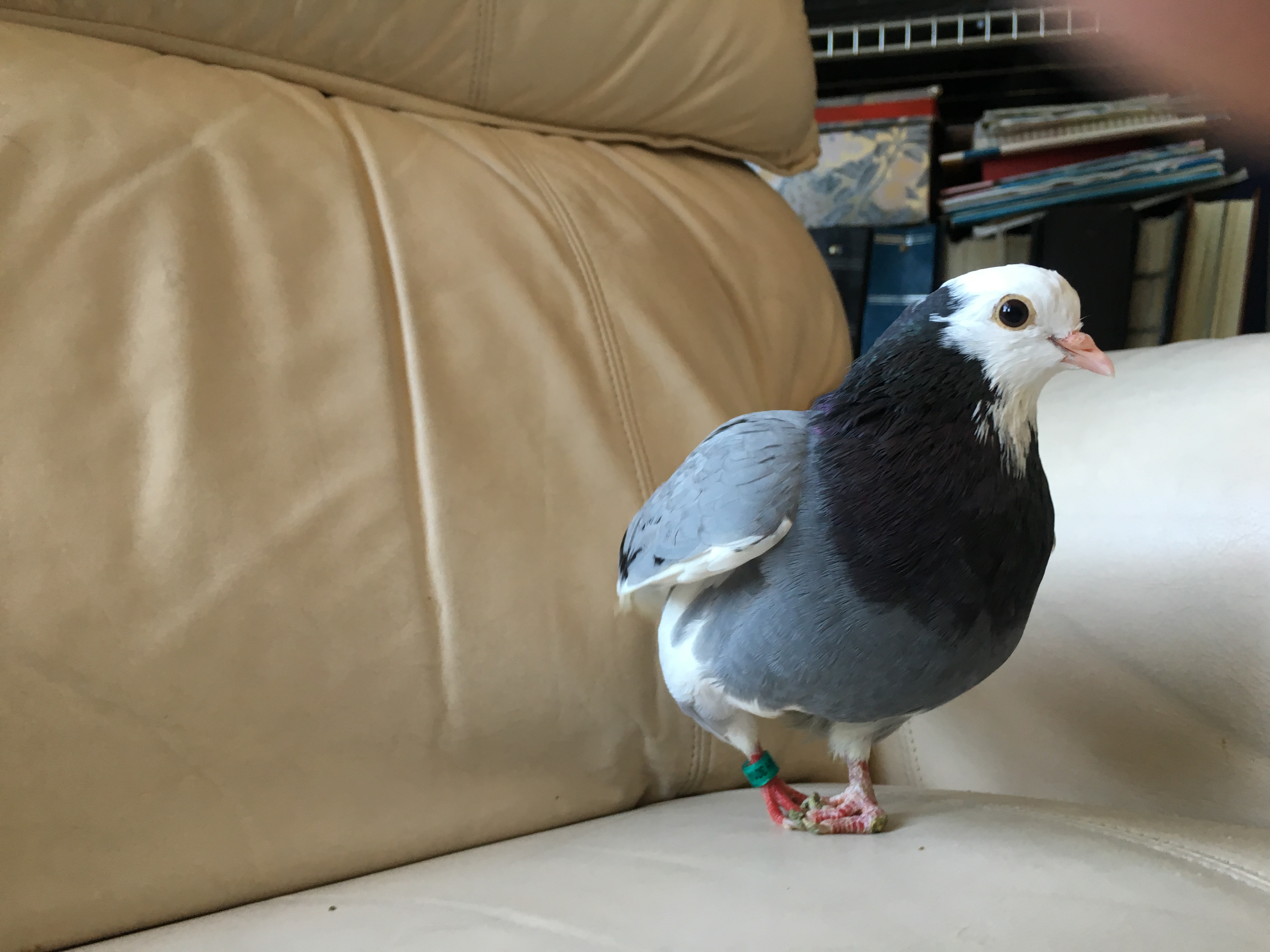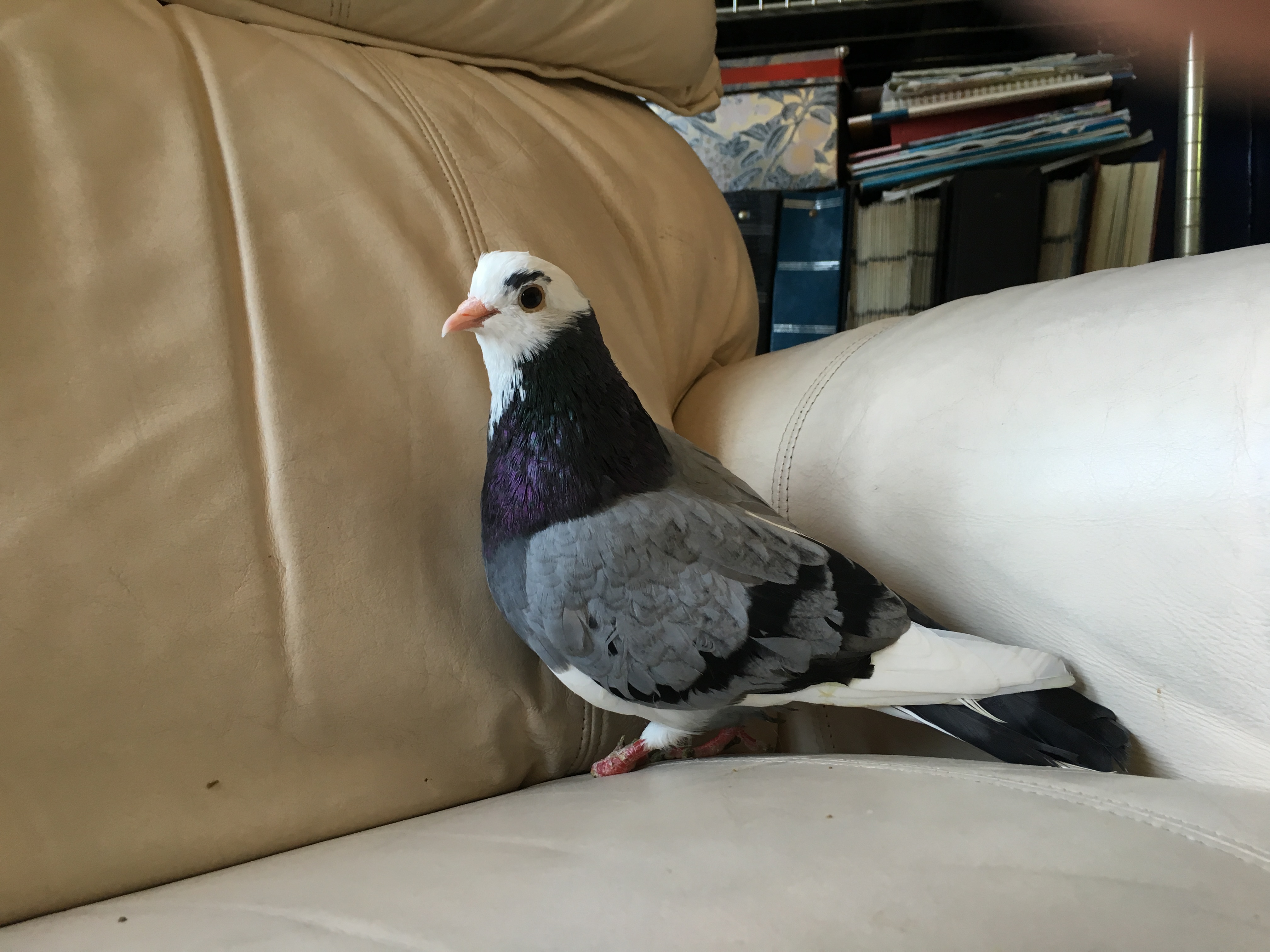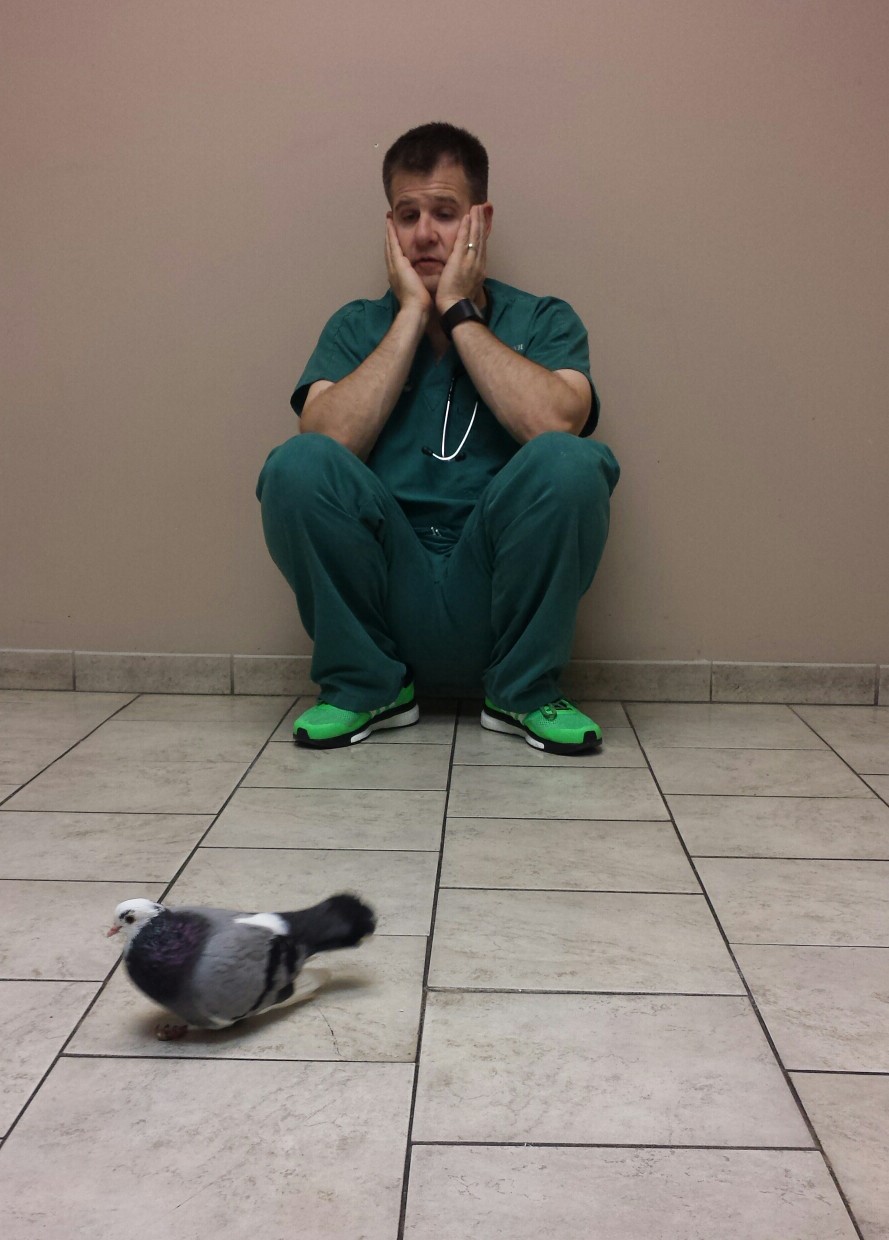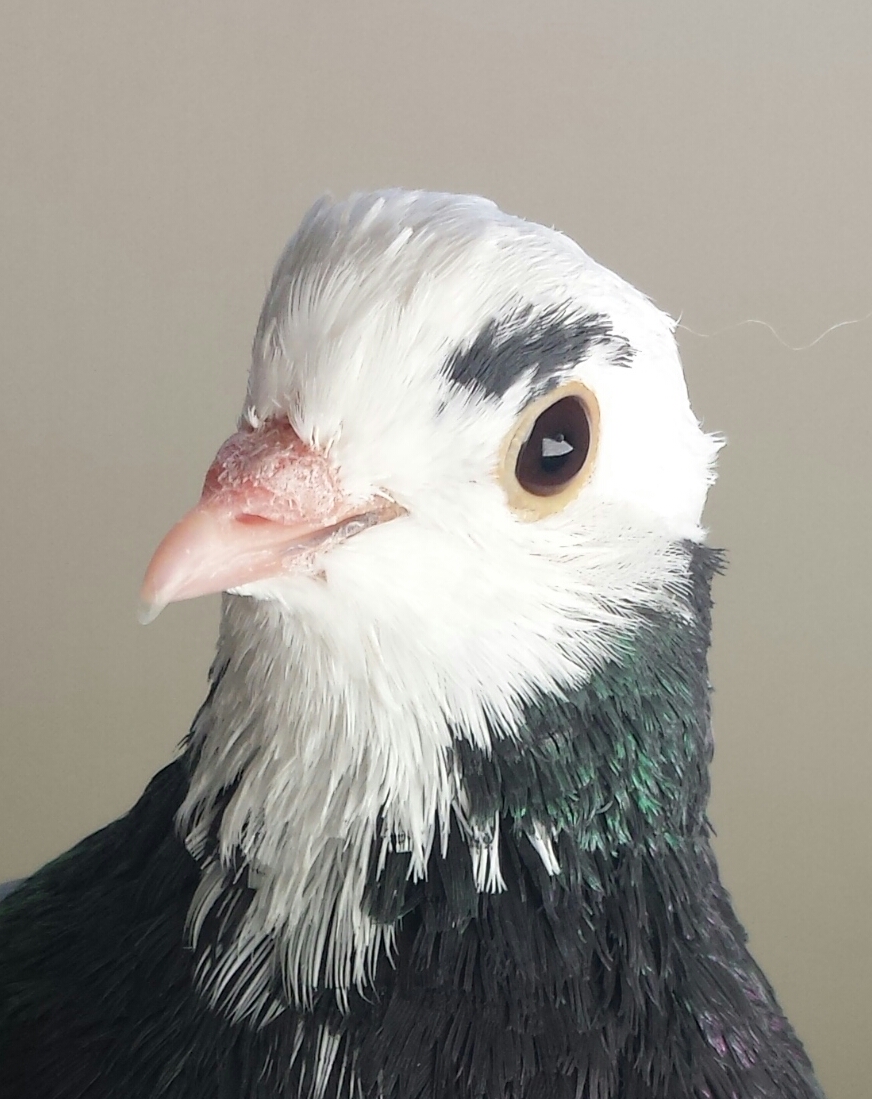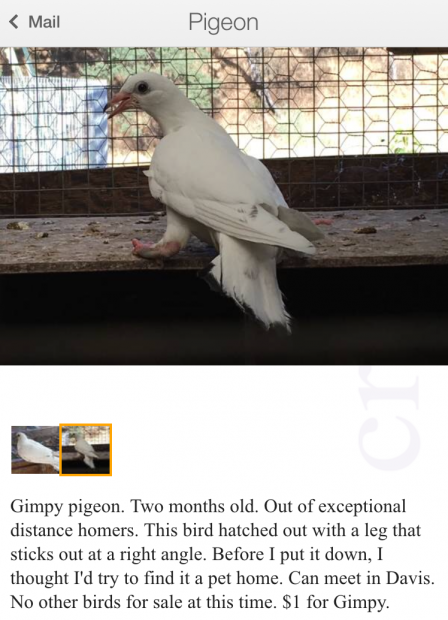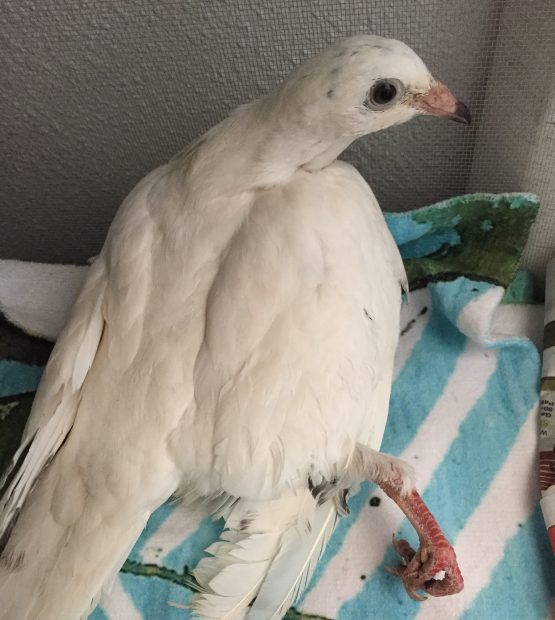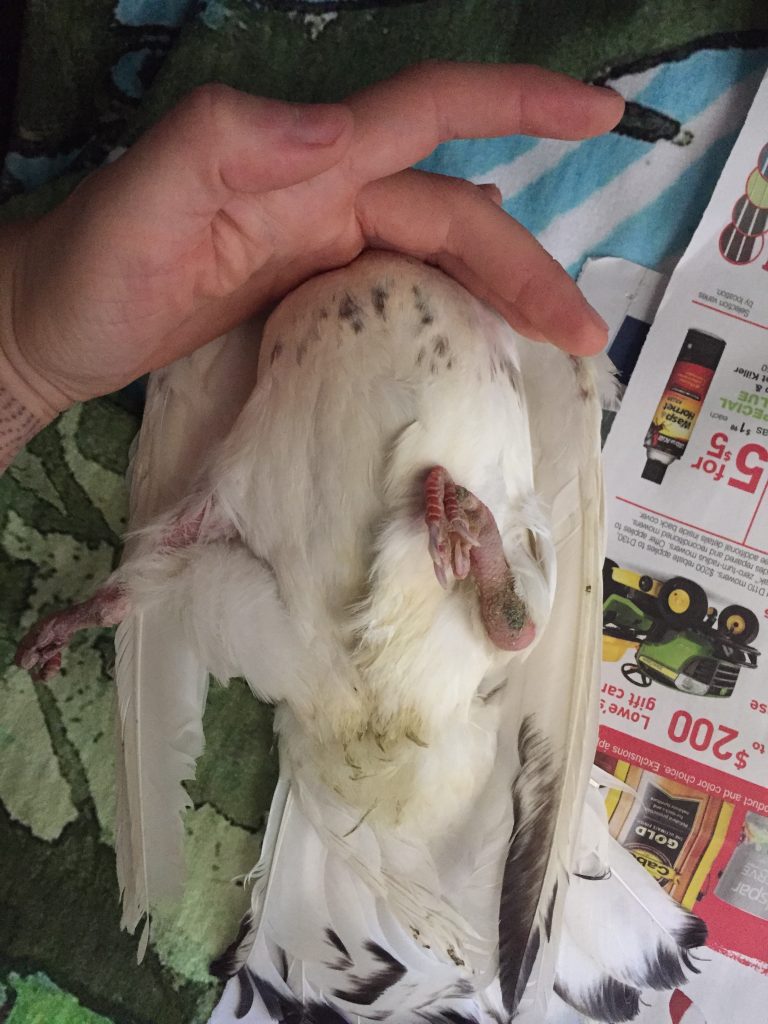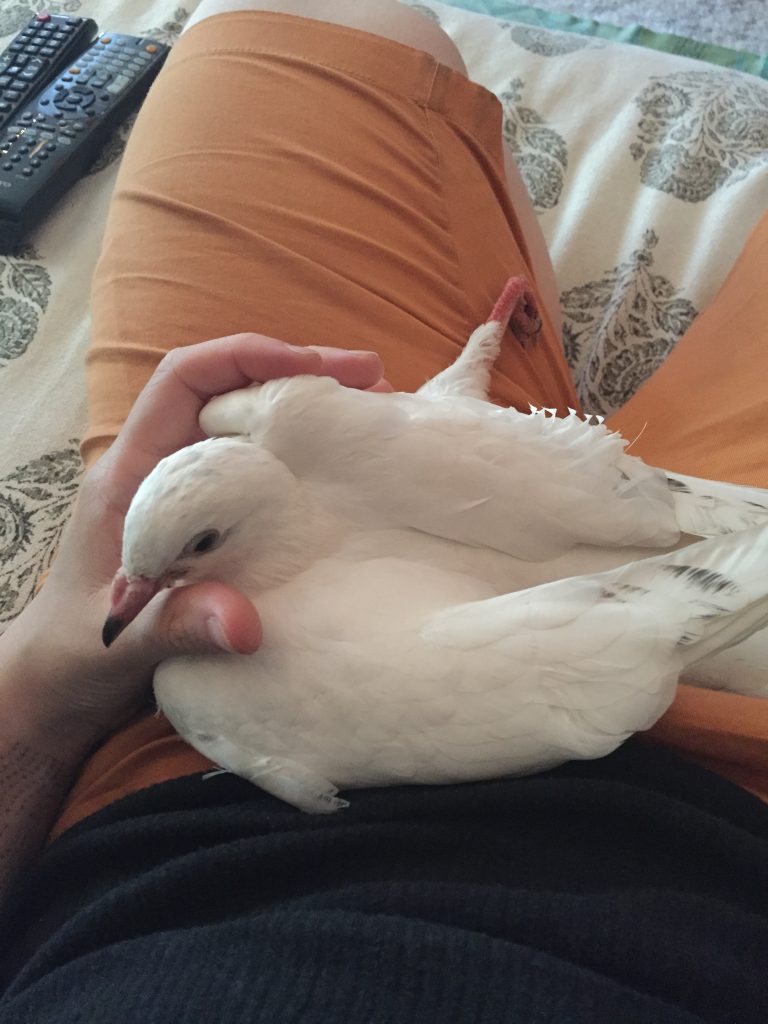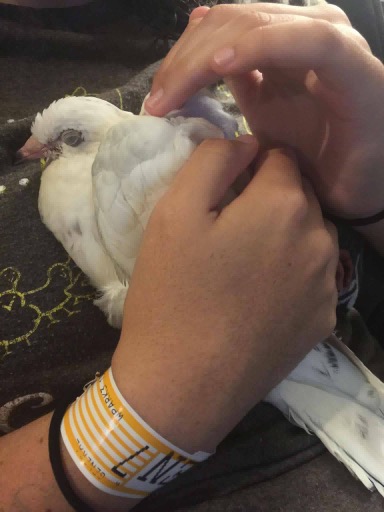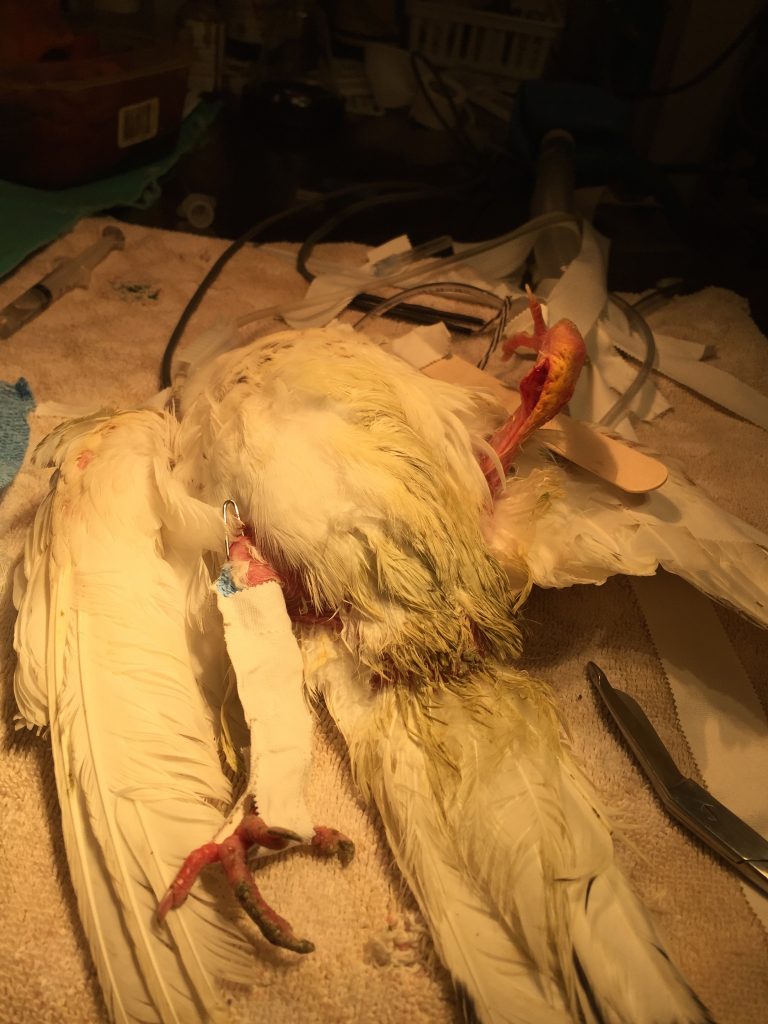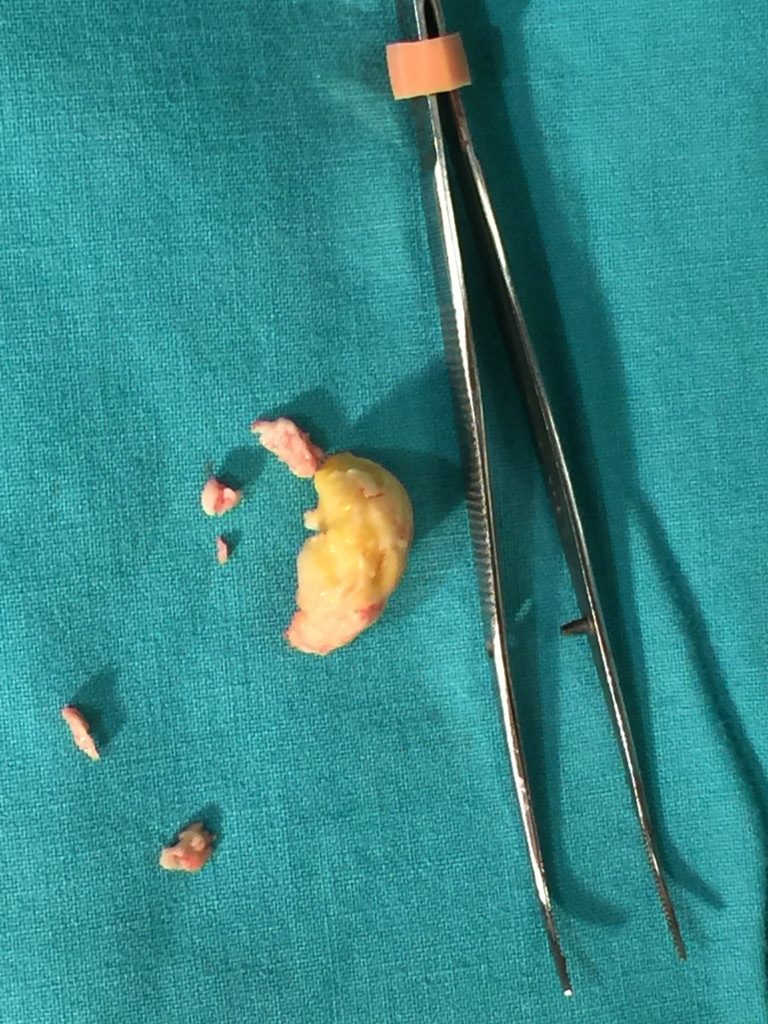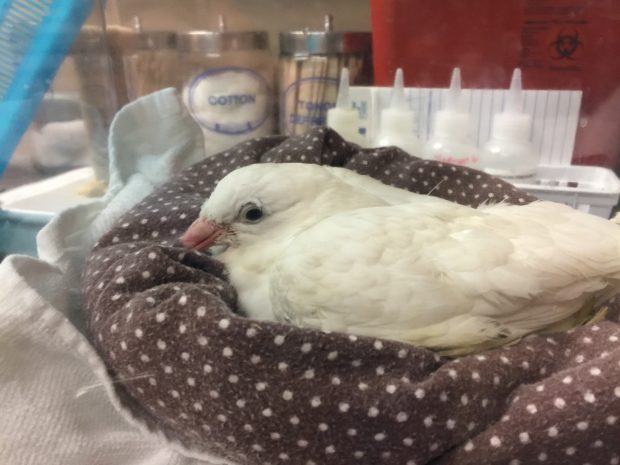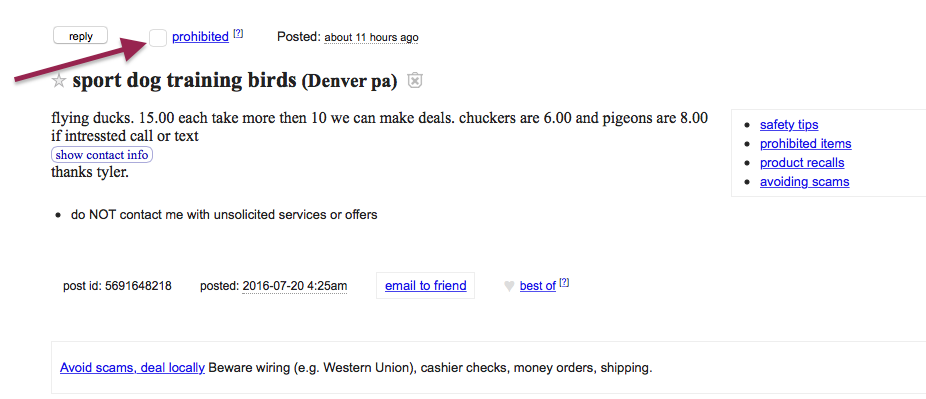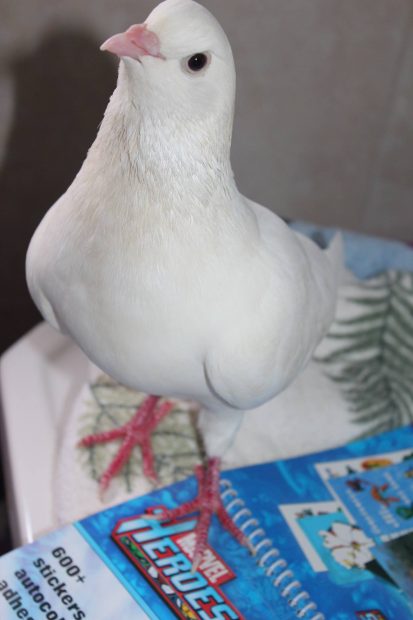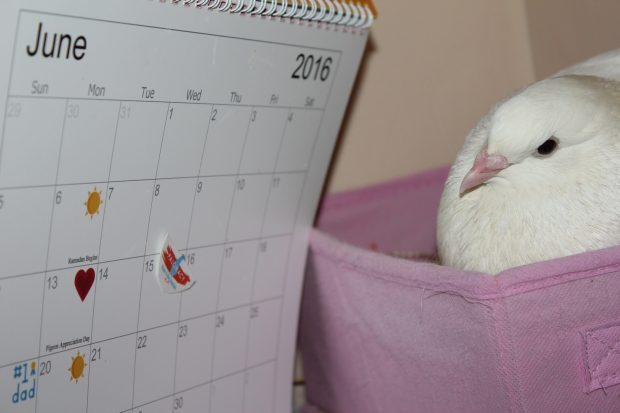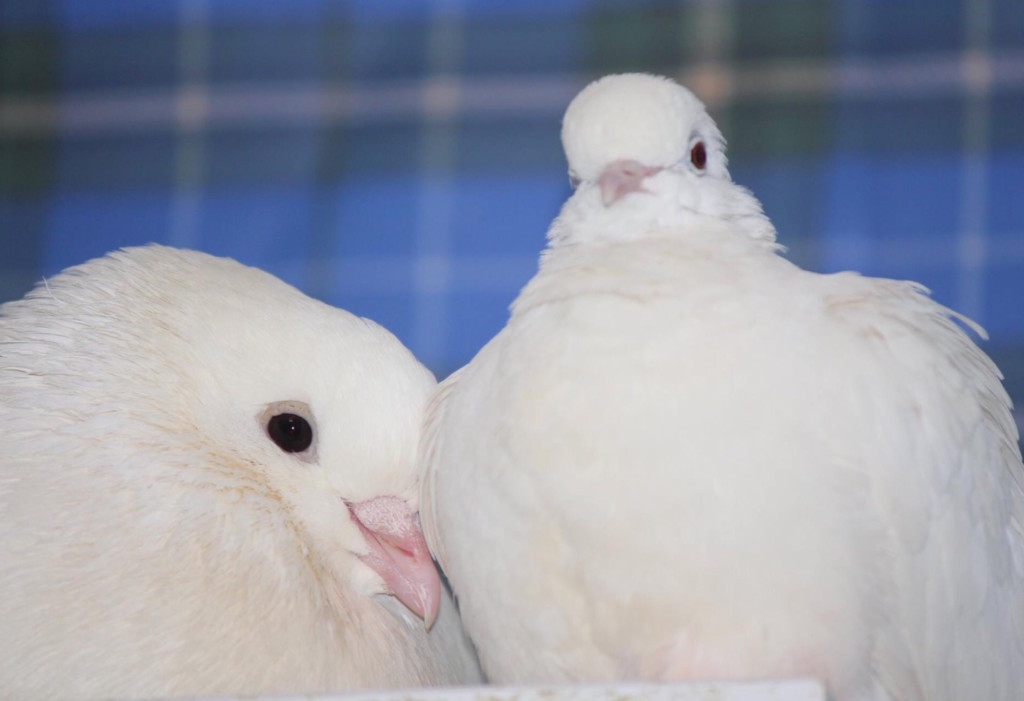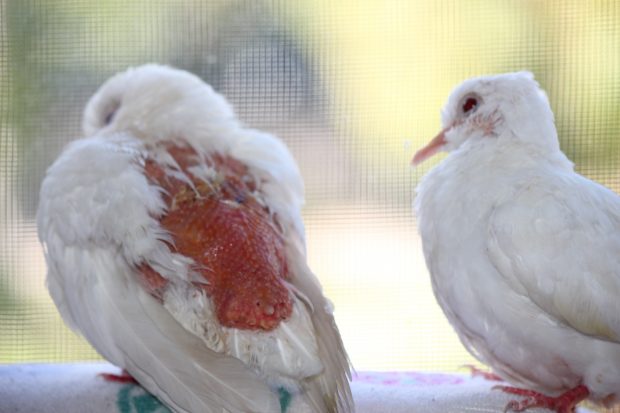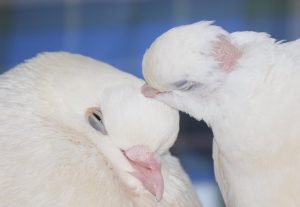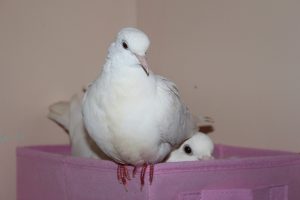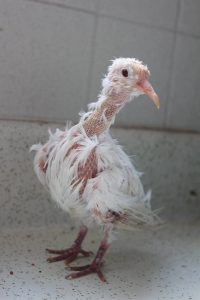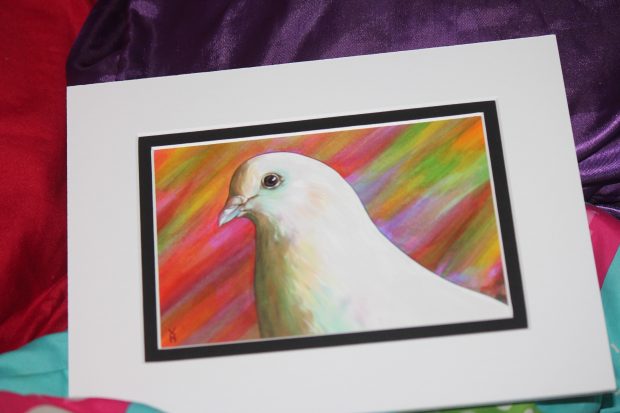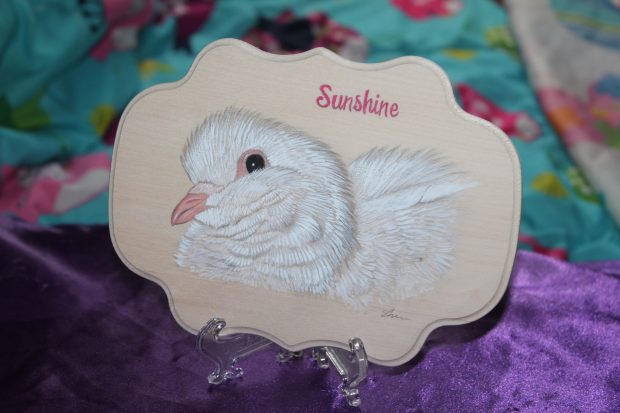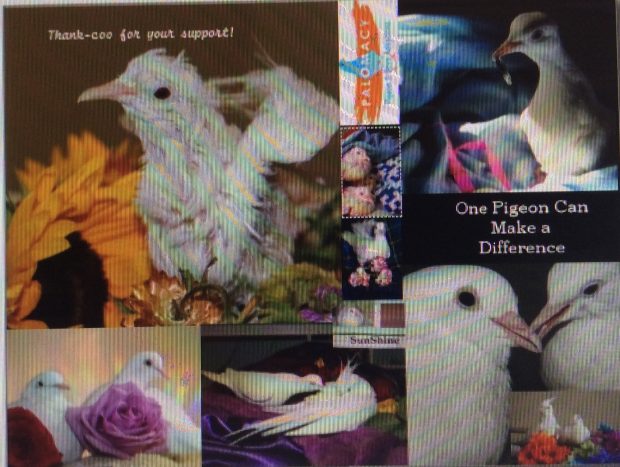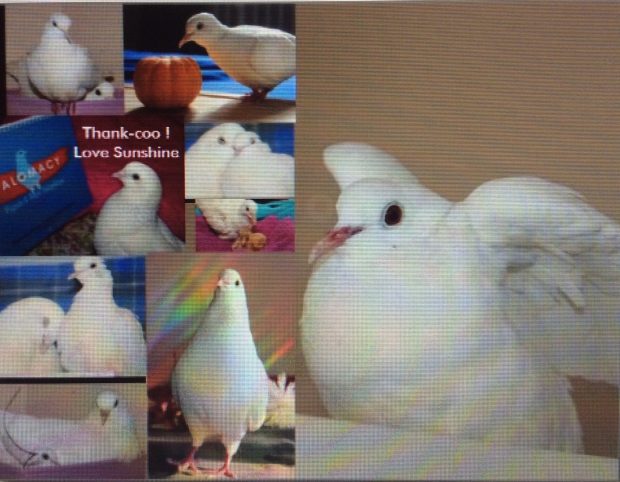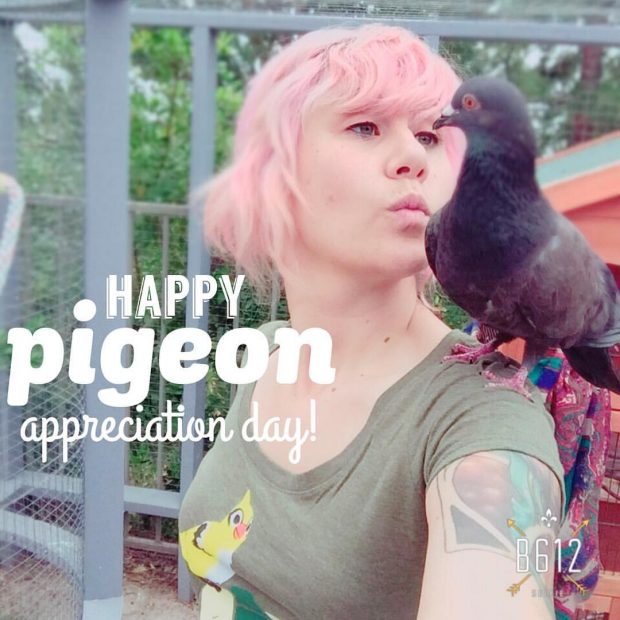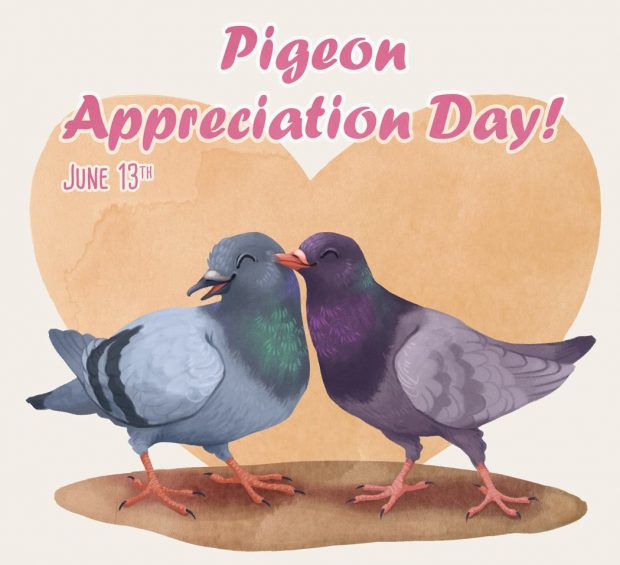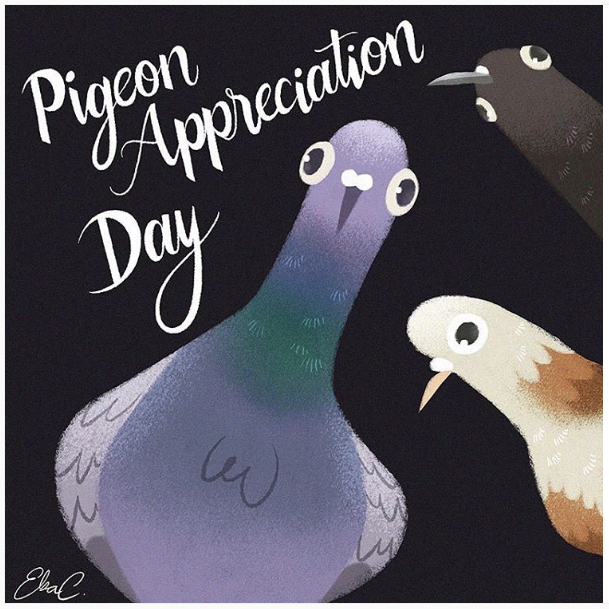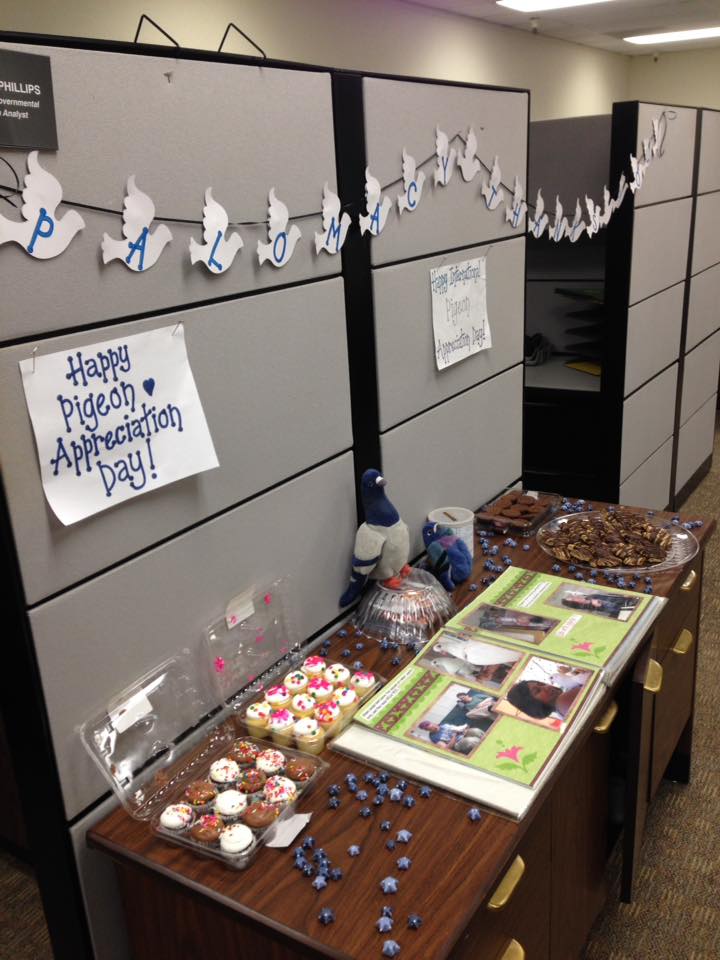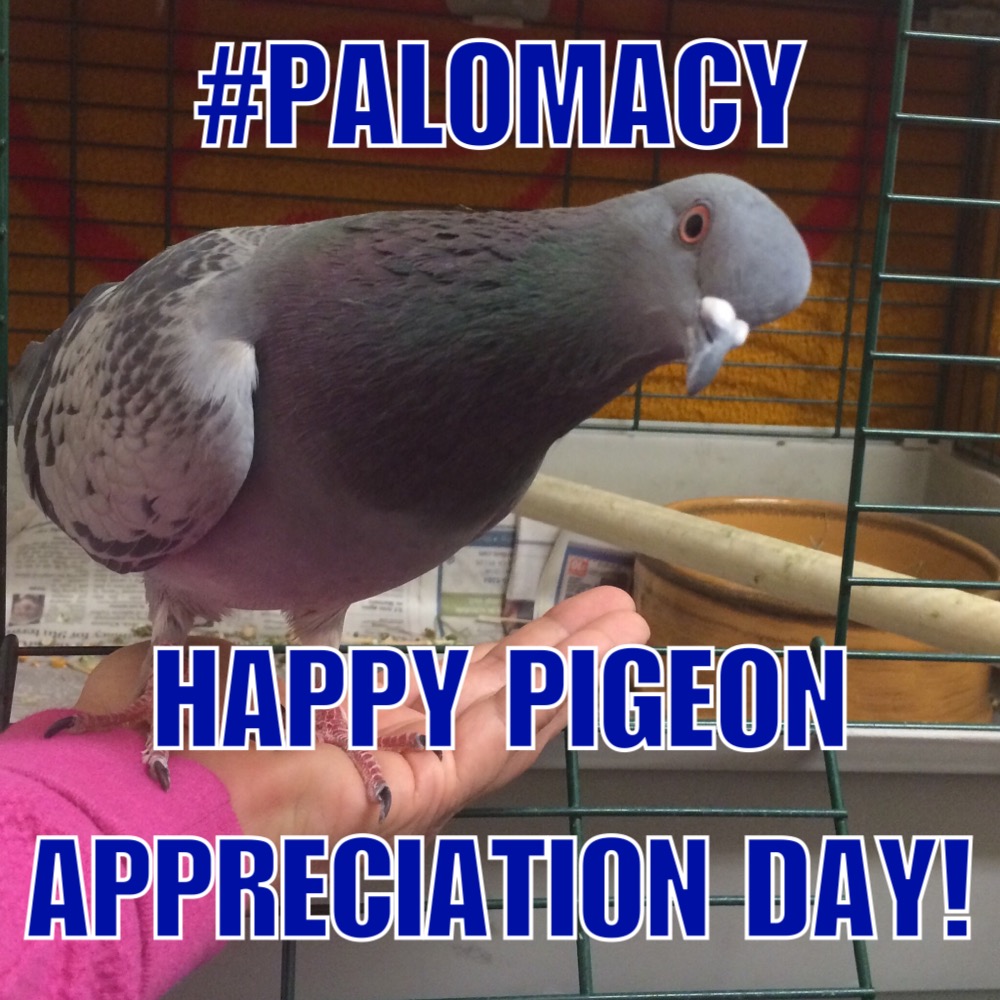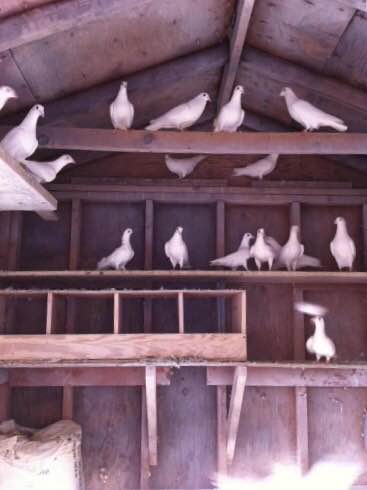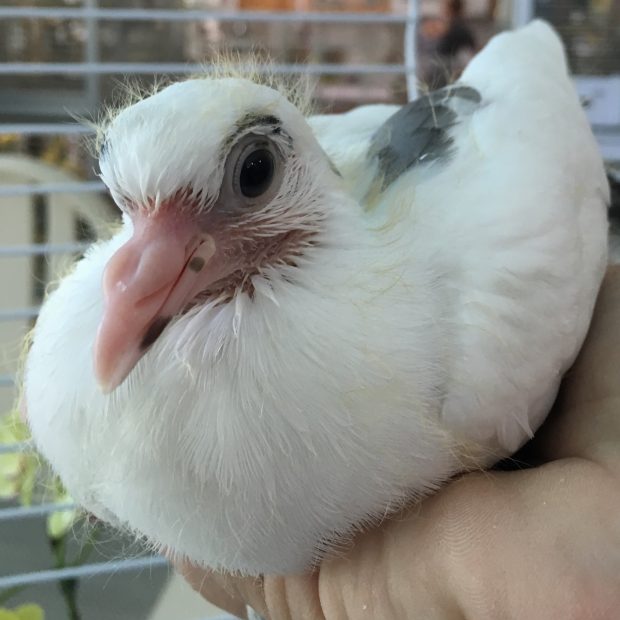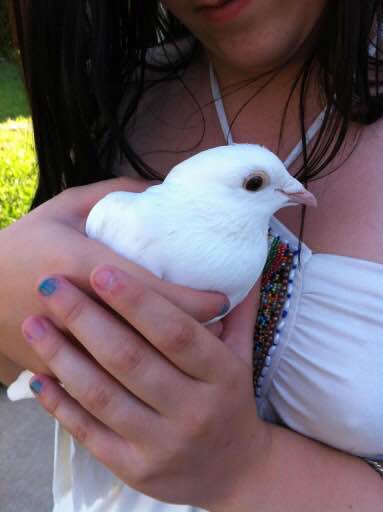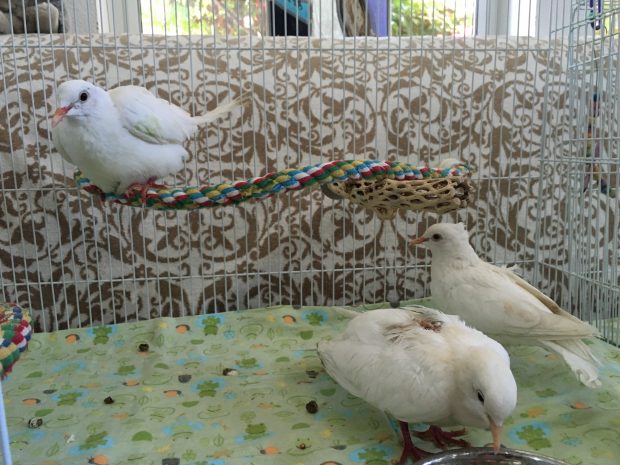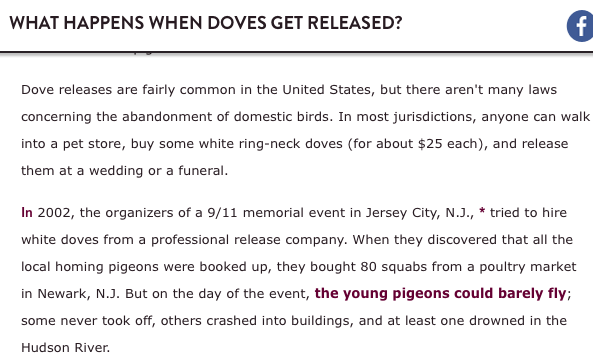Created by Christiana Reed

Photo of Christiana & Talma by Elisabeth Millay
The work of animal rescuers (and the humans who love them) can be very un-glamorous. Totally worth the effort, but very humble and messy. Palomacy’s volunteers shine brightly through it all, though, their generosity and compassion radiant through the endless pij pants changes, cleaning of aviaries, hours in cars crowded with cages, and fatigue at the end of long advocacy events.
Volunteer Christiana Reed wanted to find a way to show the world how beautiful the spirit of Palomacy is, and got inspired to learn the art of tutu making to this end, with all sales benefitting the cause of the pigeons. This endeavor took on a life of its own, and Christiana’s coo-ture is now showcased in all manner of settings, from tea parties to Burning Man.
To help with the cost of some Palomacy’s recent large vet bills, Christiana is now offering her entire inventory of tutus and matching corsets at tutu-good-to-be-true prices! 100% of proceeds are donated directly to Palomacy, and you have the opportunity to score one-of-a-kind creations just in time for Hallowe’en.
Photos and information on the items for sale are below. Please contact Christiana at christianadove13@yahoo.com to place an order or ask any questions.
Christiana also gladly takes custom orders all year round, for people and pets (including pigeons), and as always, 100% of proceeds are donated to Palomacy.
Ensemble fit for a Hallowe’en Queen
Start with a reversible floor-length tutu skirt, wearable with black or or a peachy orange as the predominant color.
The waistband is wide, soft, light-as-air black crochet, which will comfortably stretch to accommodate a waist 28 to 43 inches.
Black and orange tutu skirt alone: Was $50. Now just $36 + shipping!
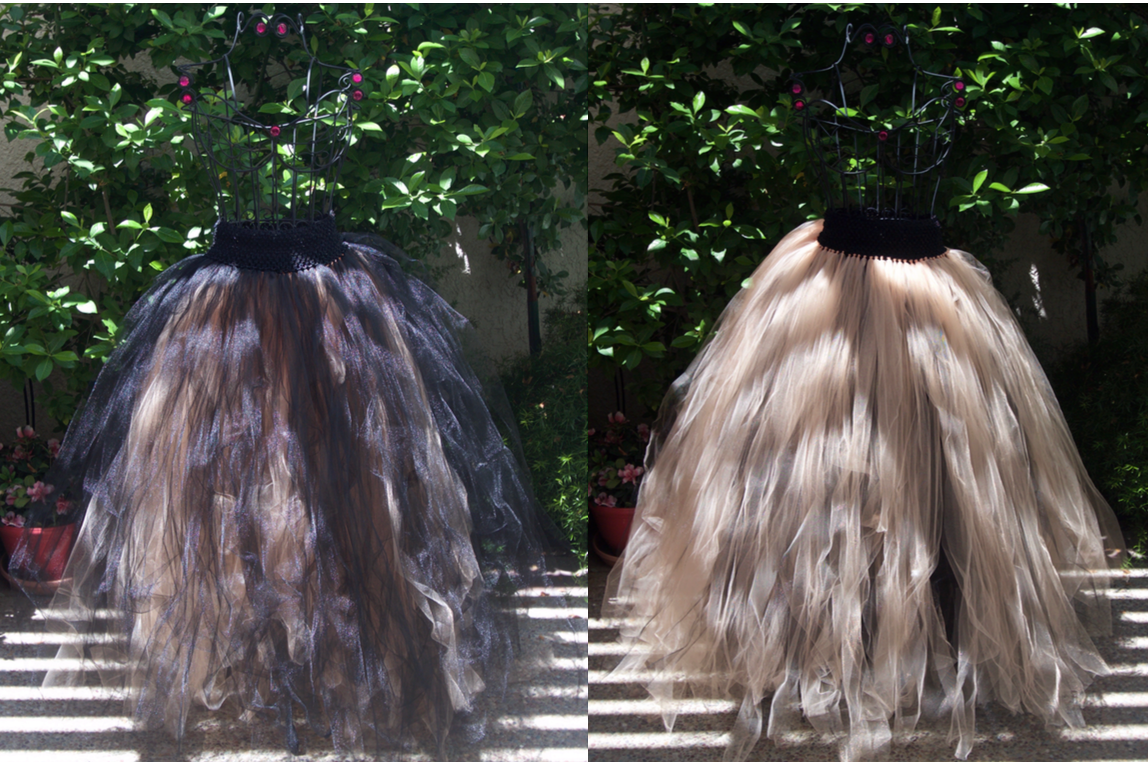
Two corsets to match the orange and black skirt, or to complement any other item in your own wardrobe.
A peachy-orange and black flocked brocade pattern corset, which closes at the front with a busk and laces seductively up the back with black ribbon. Includes an attached back modesty panel, and will fit a natural waist up to 32 inches.
Orange and black corset: Was $32. Now just $20 + shipping!
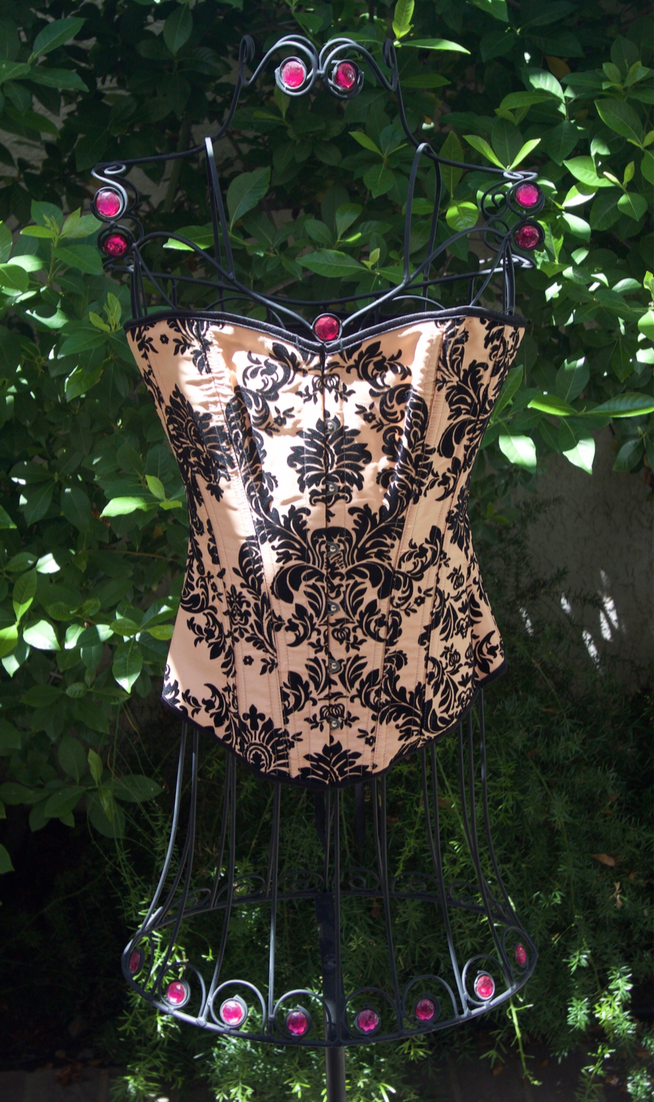
A black and gold brocade corset with steampunk clasps to close the front, and sexy black ribbon lacing up the back. Includes an attached back modesty panel, and will fit a natural waist up to 32 inches. Also comes with a matching brocade thong (plastic packaging seen pinned to corset back in photo).
Black and gold brocade corset: Was $35. Now $22 + shipping!
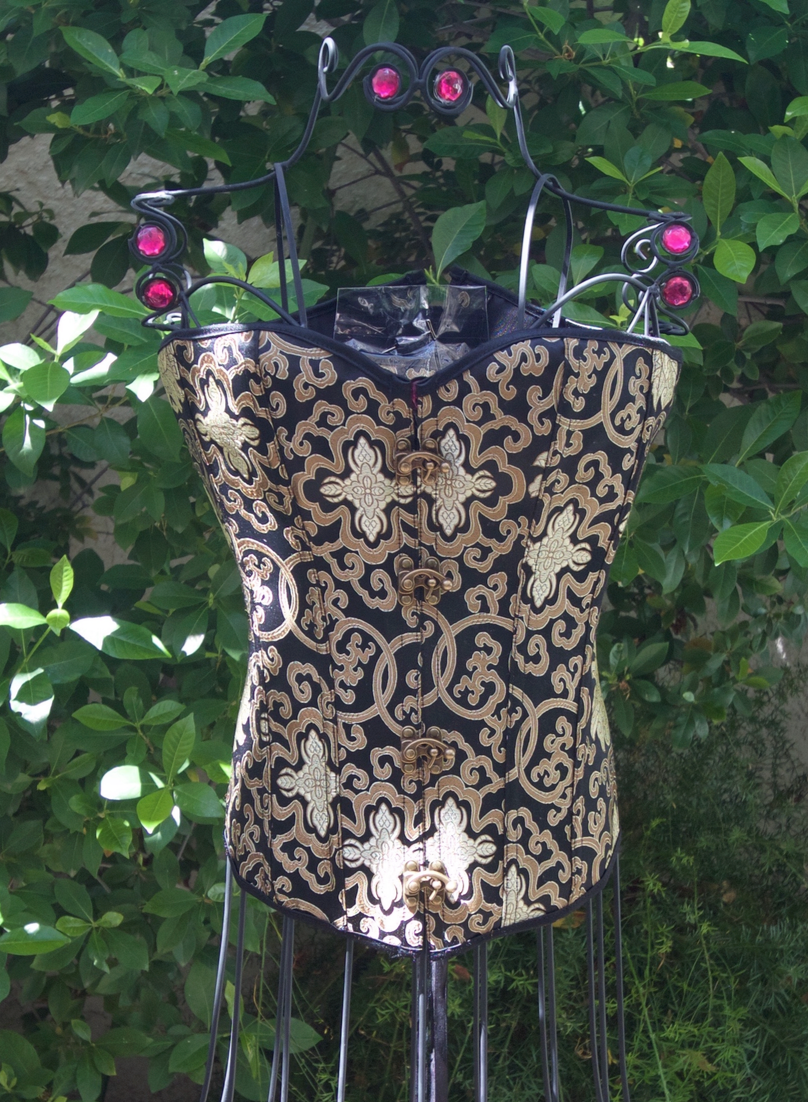
For a spectacularly head-turning combination, pair the black and orange tutu skirt with either corset!
Special combination pricing:
Tutu skirt + black and orange corset: $50 + shipping
Tutu skirt + black and gold corset: $52 + shipping
Tutu skirt + both corsets: $70 + shipping
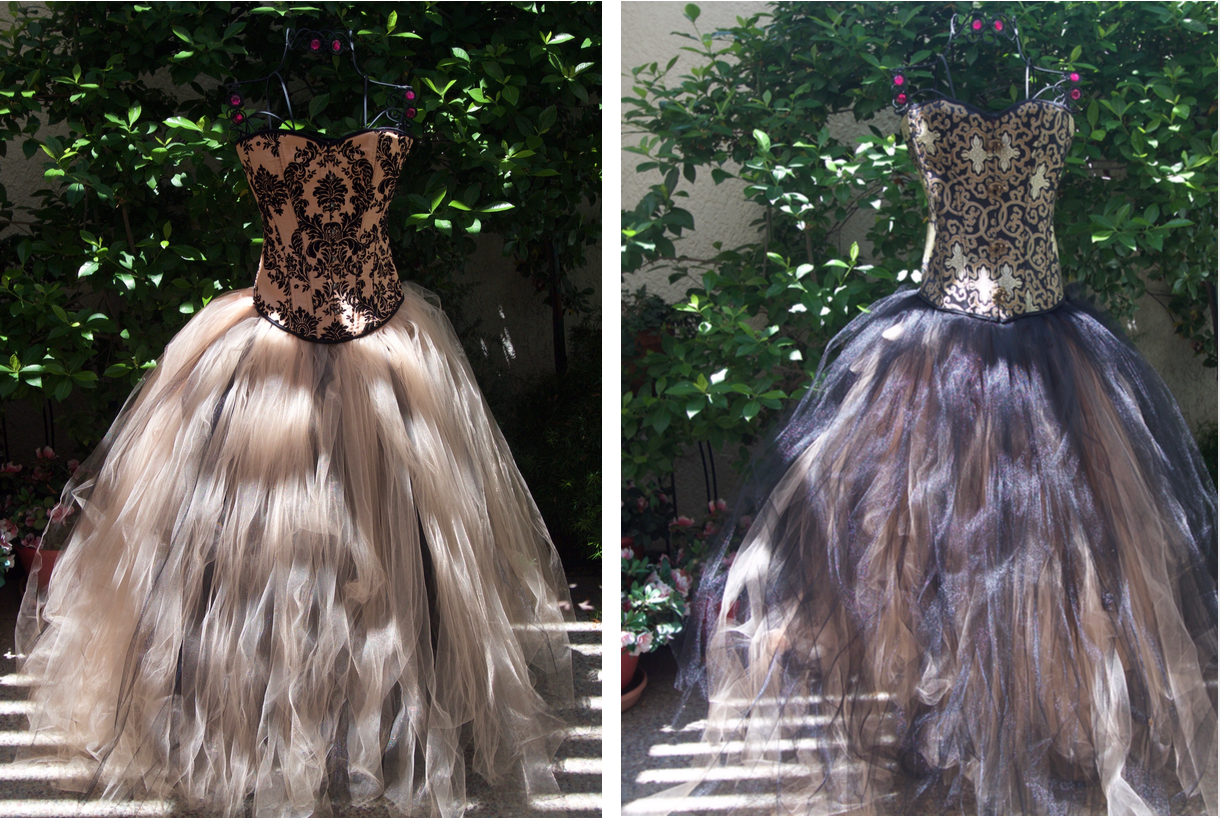
Gothic Double-Delight
Another tutu skirt certain to get you noticed at any Hallowe’en gathering, in the club, or at any artsy occasion!
This knee-length skirt is reversible.
On one side, the skirt is purple and deep plum with a slightly longer black bustle.
On the other side, the skirt is black with a slightly longer burgundy bustle.
The waistband is a wide purple soft, light-as-air crochet which can comfortably stretch to accommodate a waist 28 to 45 inches.
Gothic Double-Delight tutu skirt: Was $38. Now just $26 + shipping!
Please note, the tutu appears see-through in the photos due to the background sunlight, but in fact it offers dense coverage.
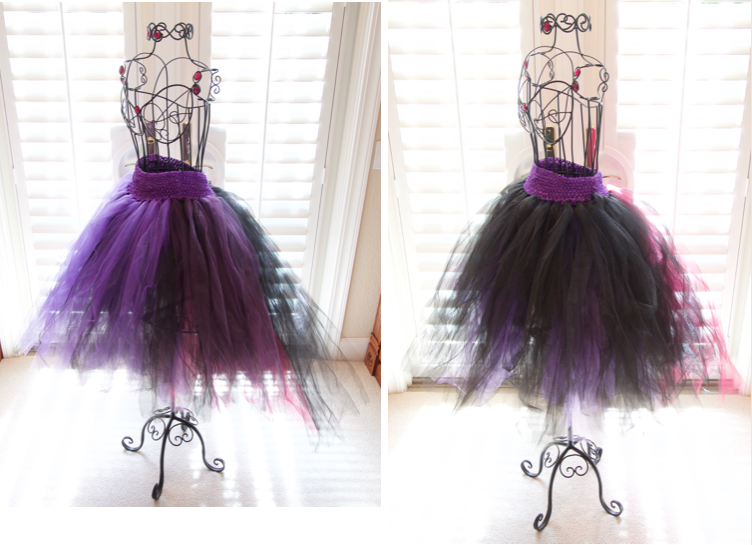
Plum Pleasure
A knee-length tutu skirt perfect for gothic cosplay or any artistic evening occasion.
This tutu is reversible, and can be worn with either black or deep plum as the predominant color.
The waistband is wide, soft, light-as-air black crochet, which will comfortably stretch to accommodate a waist 26 to 43 inches.
Plum Pleasure tutu skirt: Was $30. Now just $22 + shipping!
Please note, the tutu appears see-through in the photos due to the background sunlight, but in fact it offers dense coverage.
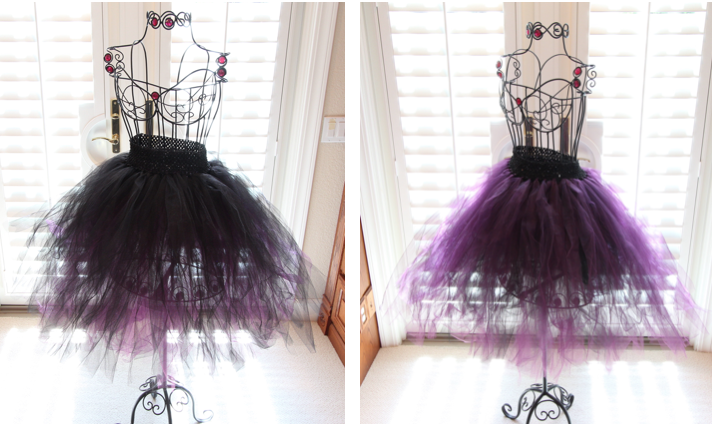
Plum Pleasure Bustle
For those who want to gently ease into the tutu-wearing experience, or to spice up an existing outfit!
This bustle is deep plum purple with accents of black, and covers the backside and hips. The waistband is wide, soft, light-as-air black crochet, which will comfortably stretch to accommodate a waist 27 to 43 inches.
Plum Pleasure bustle tutu: Was $22. Now just $14 + shipping!
Please note, the bustle appears see-through in the photos due to the background sunlight, but in fact it offers dense coverage.
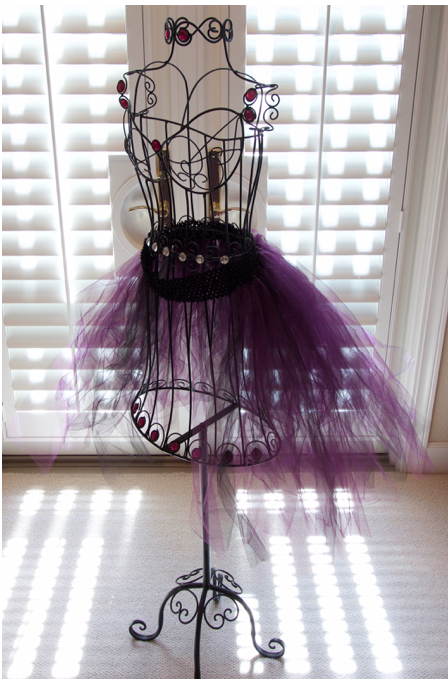
Beauty Ablaze
A mid-calf-length bustle-only piece that perfectly showcases your fiery spirit!
The waistband is wide, soft, light-as-air black crochet, which will comfortably stretch to accommodate a waist 36 to 60 inches at present. This can easily be reduced to a smaller size if desired.
Beauty Ablaze bustle: Was $28. Now just $20 + shipping!
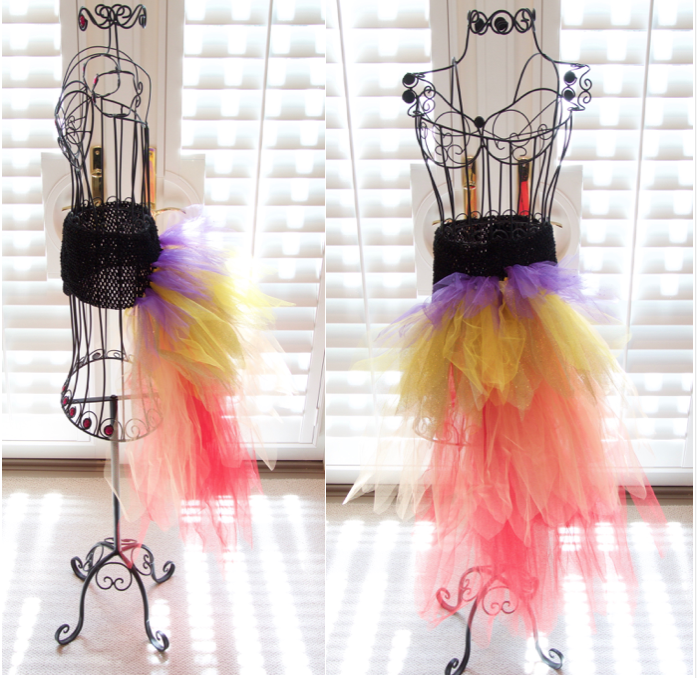
Se-tux-ion
There’s just something about a tux, especially when it’s also a tutu!
This ensemble consists of a tux-styled corset and an above-the-knee length tutu skirt.
The corset is elaborately trimmed with ribbons, lace, and bows. It closes with a front busk, and laces sexily with black cord up the back. It includes an attached back modesty panel, and can accommodate a natural waist up to 34 inches, and comes with a matching blue satin thong.
The tutu skirt is black, with a waistband of wide, soft, light-as-air black crochet, which will comfortably stretch to accommodate a waist 27 to 46 inches.
Corset alone: Was $30. Now just $20 + shipping!
Tutu skirt alone: Was $25. Now just $18 + shipping!
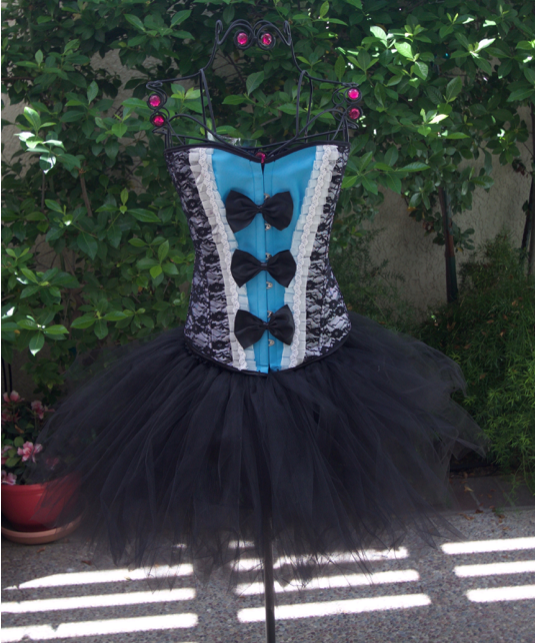
Corset + tutu skirt: Was $50. Now just $35 + shipping!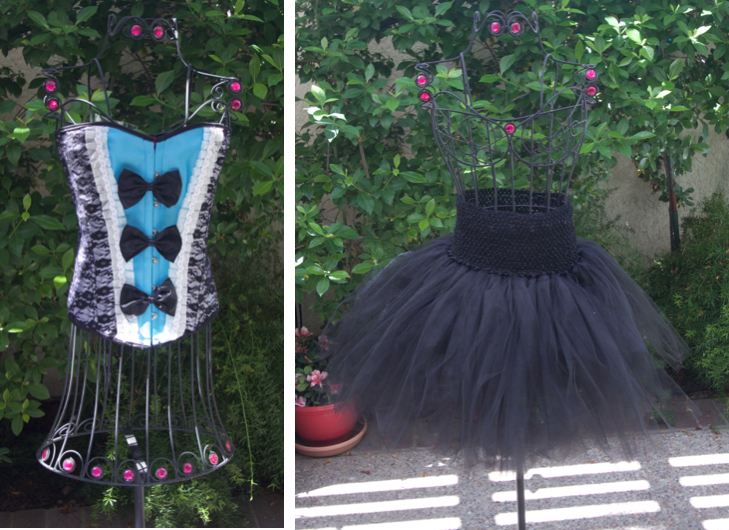
Goth Meets Vegas
Who knew that a showgirl-worthy bustle skirt would go so well with a skulls-and-roses corset?
Each piece is gorgeous alone, and together they’re an absolute show-stopper.
The corset combines a skulls, chains, and roses fabric pattern with feminine black ribbon trim and bow detail. It closes with a front busk and laces seductively up the back with black ribbon. It includes an attached back modesty panel and can accommodate a natural waist up to 30 inches. It also comes with a matching satin thong (plastic packaging seen in photo of corset alone pinned to inside back).
The bright magenta tutu is a knee-length skirt with a big floor-length bustle. The waistband is made of wide, soft, light-as-air magenta crochet, which will comfortably stretch to accommodate a waist 25 to 44 inches.
Corset alone: Was $25. Now just $18 + shipping!
Vegas-style tutu skirt: Was $50. Now just $36 + shipping!
Corset + tutu skirt: Was $70. Now just $50 + shipping!
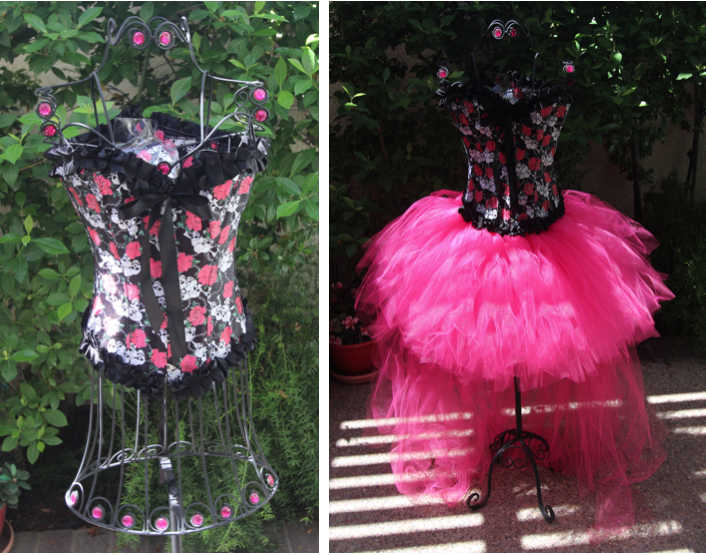
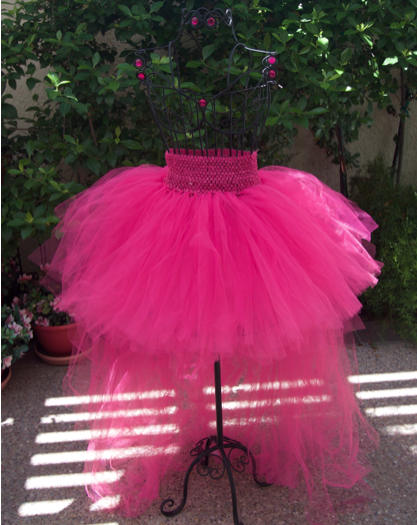
The Greatest Adventure
An ensemble designed to make a wedding or any cosplay event into the beginning of a tremendous adventure!
A full, flouncy floor-length tutu skirt in pure white is accented by a train bustle with hints of glimmering gold. The waistband is soft, light-as-air white crochet, which will comfortably stretch to accommodate a waist 26 to 38 inches.
The accompanying corset is white with a shimmering gold and silver compass-rose emblem covering the front. The front closes with a busk, and the back laces up beautifully with white ribbon. It can accommodate a waist up to 32 inches, and comes with a matching white satin thong.
A regal necklace of crystal and pastel stones is Christiana’s gift to the lucky party who purchases this ensemble!
Corset alone: Was $25. Now just $18 + shipping!
Tutu skirt alone: Was $100. Now just $60 + shipping!
Greatest Adventure corset + tutu skirt + free necklace gift: Was $120. Now just $70 + shipping!
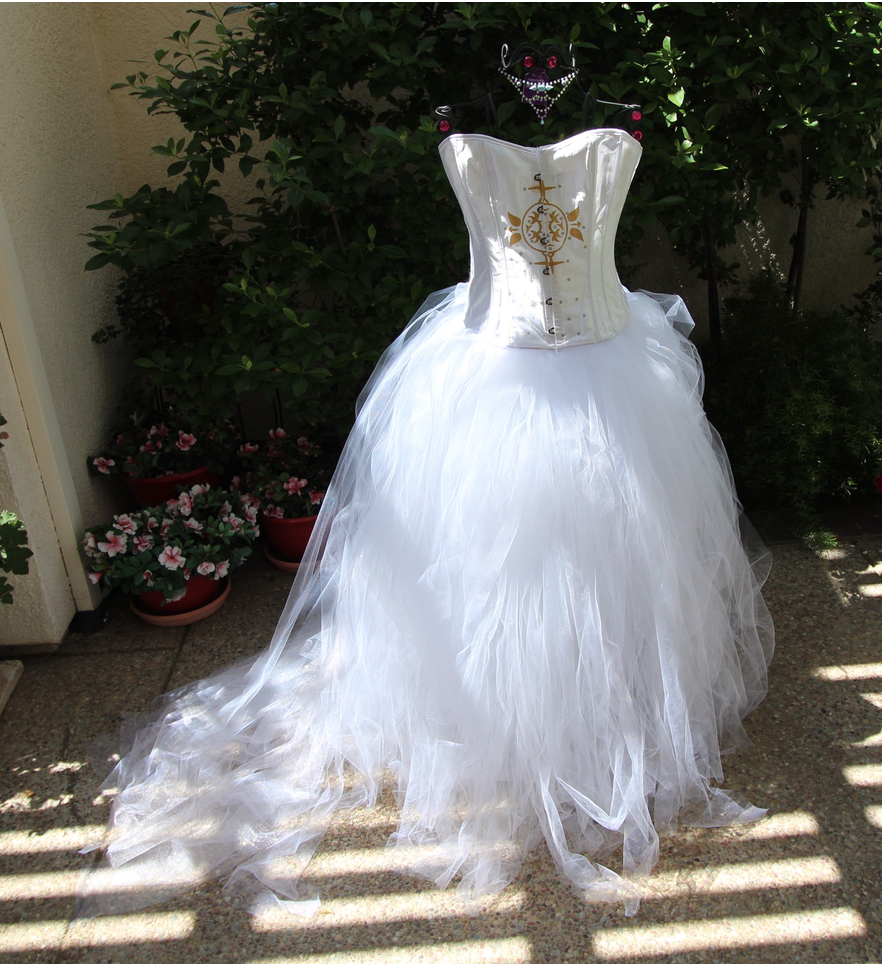
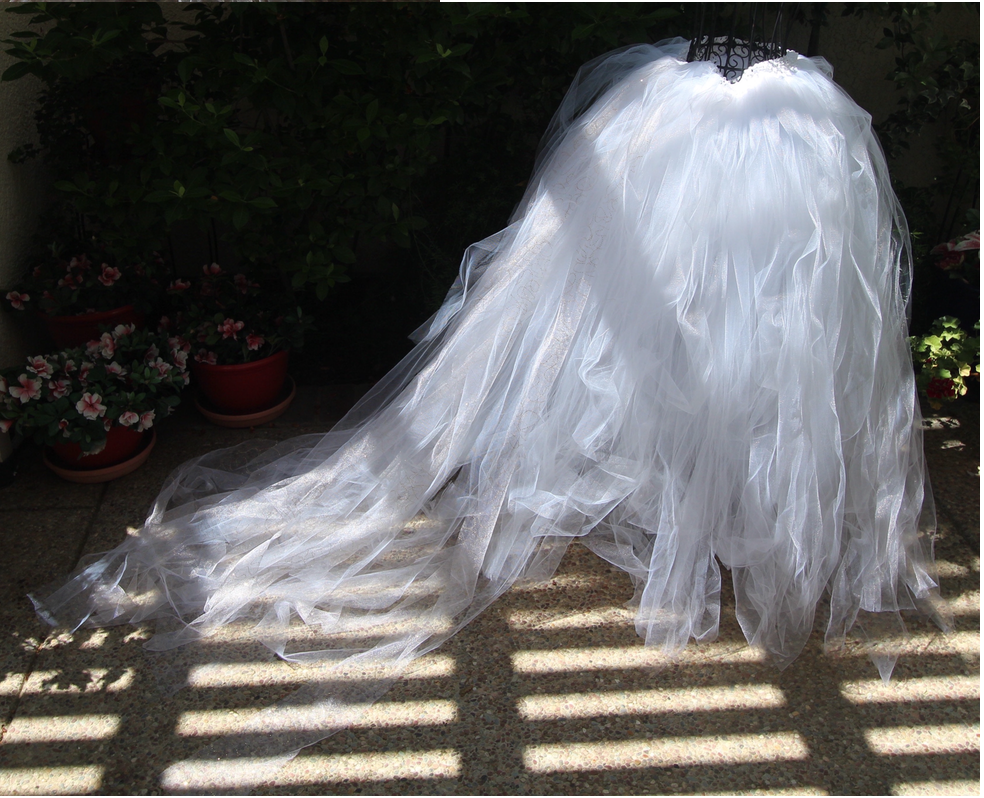
Cabaret-dorable!
This is a tutu skirt designed to showcase your inner cabaret singer.
It’s a full, knee-length black skirt with a sparkly silver sequin waistband that will comfortably fit a waist 34 to 54 inches.
Cabaret-dorable tutu skirt: Was $35. Now just $22 + shipping!
Please note, the tutu appears see-through in the photos due to the background sunlight, but in fact it offers dense coverage.
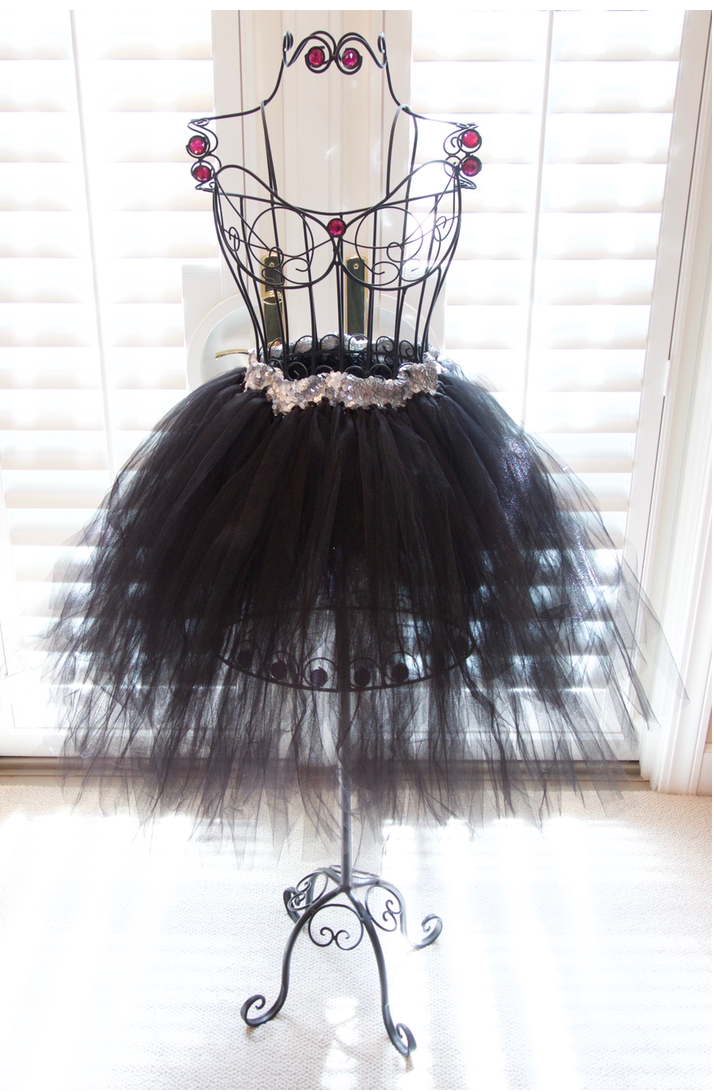
Cupid’s Ambassador
This seductive little number will bring out your inner Cupid for sure. It’s also great as part of a sexy Santa’s helper ensemble!
The tutu is mid-thigh length and has an iridescent white sequin waistband that will comfortably stretch to fit a waist 26 to 42 inches. The back has a knee-length bustle and a sassy large, sparkly mesh bow.
Cupid’s Ambassador tutu skirt: Was $26. Now just $17 + shipping!
Please note, the tutu appears see-through in the photos due to the background sunlight, but in fact it offers dense coverage.
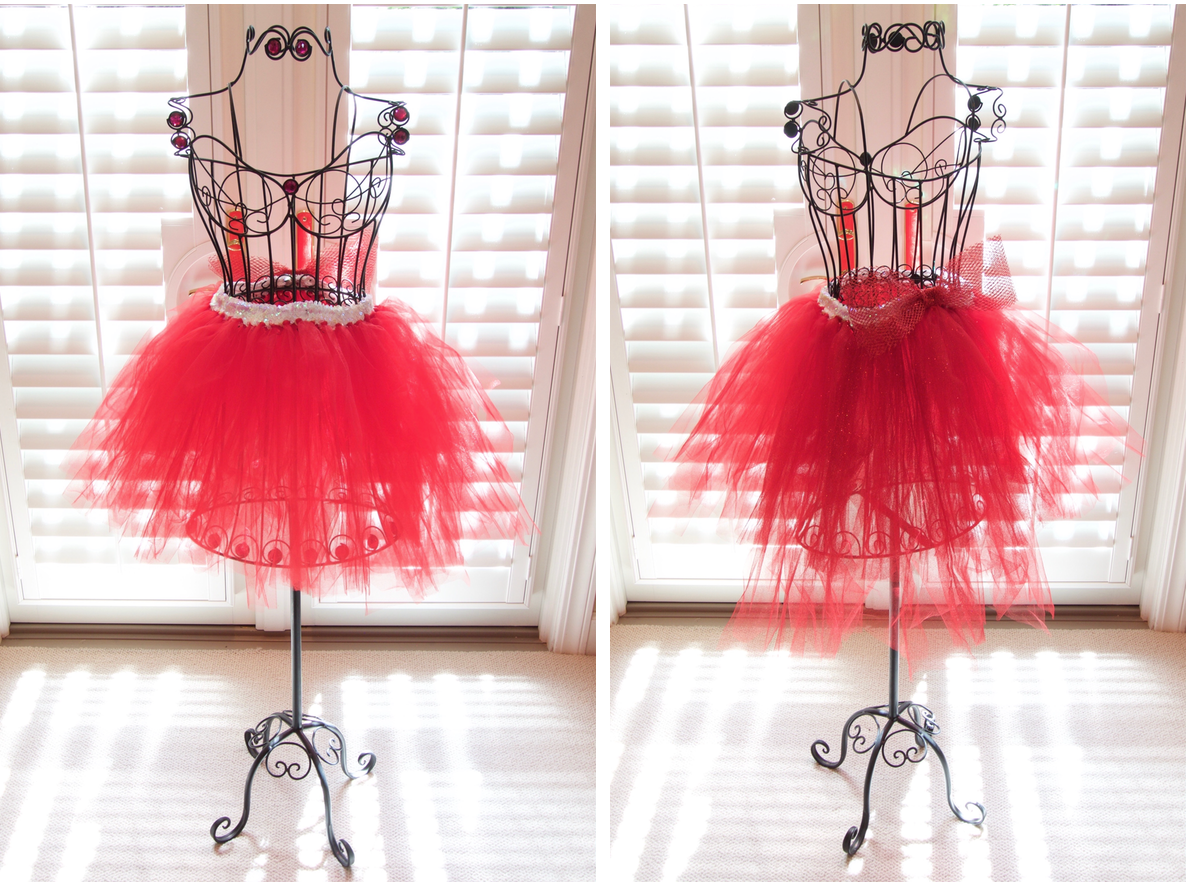
Cupid Jr.
An adorable little girl’s tutu for the holiday season or Valentine’ day. Delightful alone, or as an accompaniment to a grown-up wearing the Cupid’s Ambassador tutu!
Red covers a white under-layer in this girls’ knee-length skirt, with a soft, light-as-air white crochet waistband, which will comfortably stretch to accommodate a waist up to 20 inches. The back has a sassy large, sparkly mesh bow, trimmed with a silk flower with a large rhinestone center.
Cupid Jr. girls’ tutu skirt: Was $20. Now just $14 + shipping!
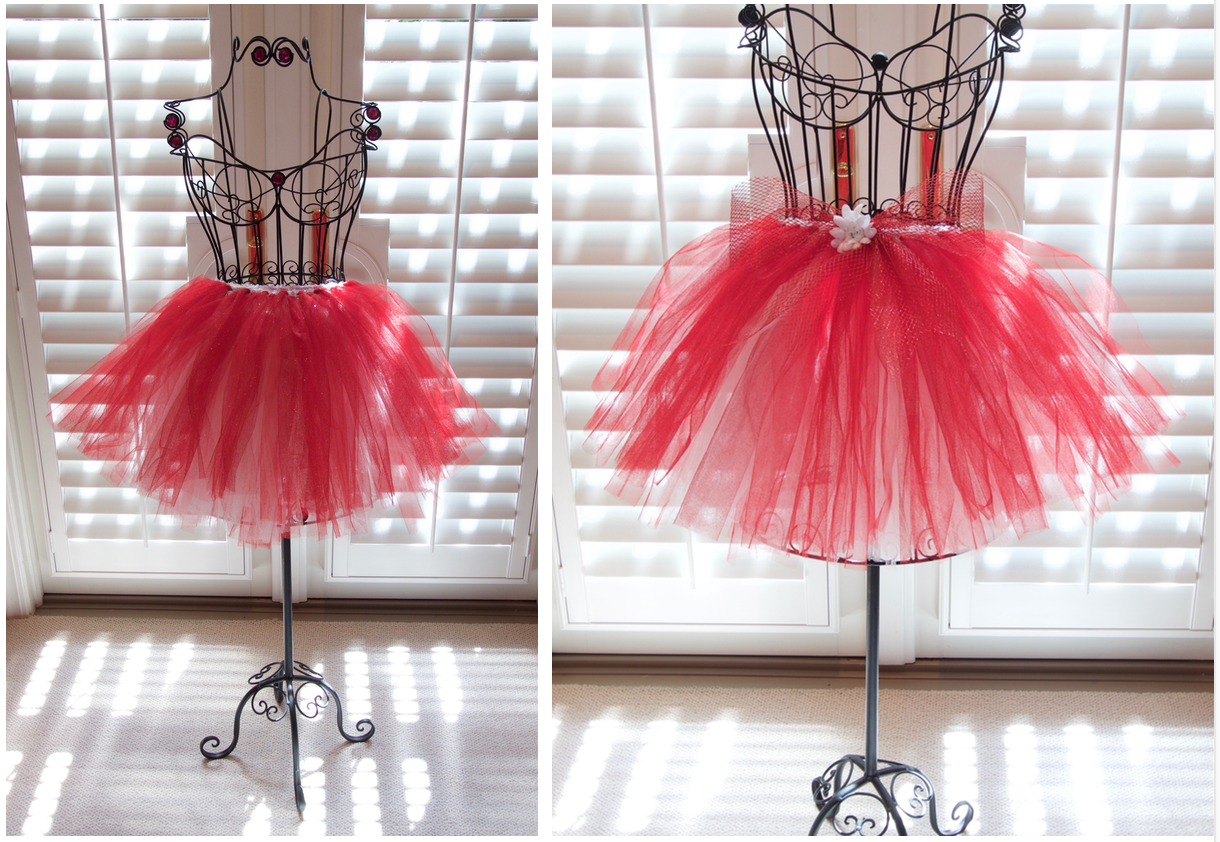
Sparkling Sweet Pea
A little girl’s springtime dream!
This girls’ size tutu skirt is a knee-length confection of pink and lightly-glittered lavender, with a pink and purple mid-calf length bustle accented with three silk flowers with large rhinestone centers. The waistband is iridescent lavender sequins, and will comfortably stretch to fit a waist up to 21 inches.
Sparkling Sweet Pea tutu skirt: Was $23. Now just $16 + shipping!
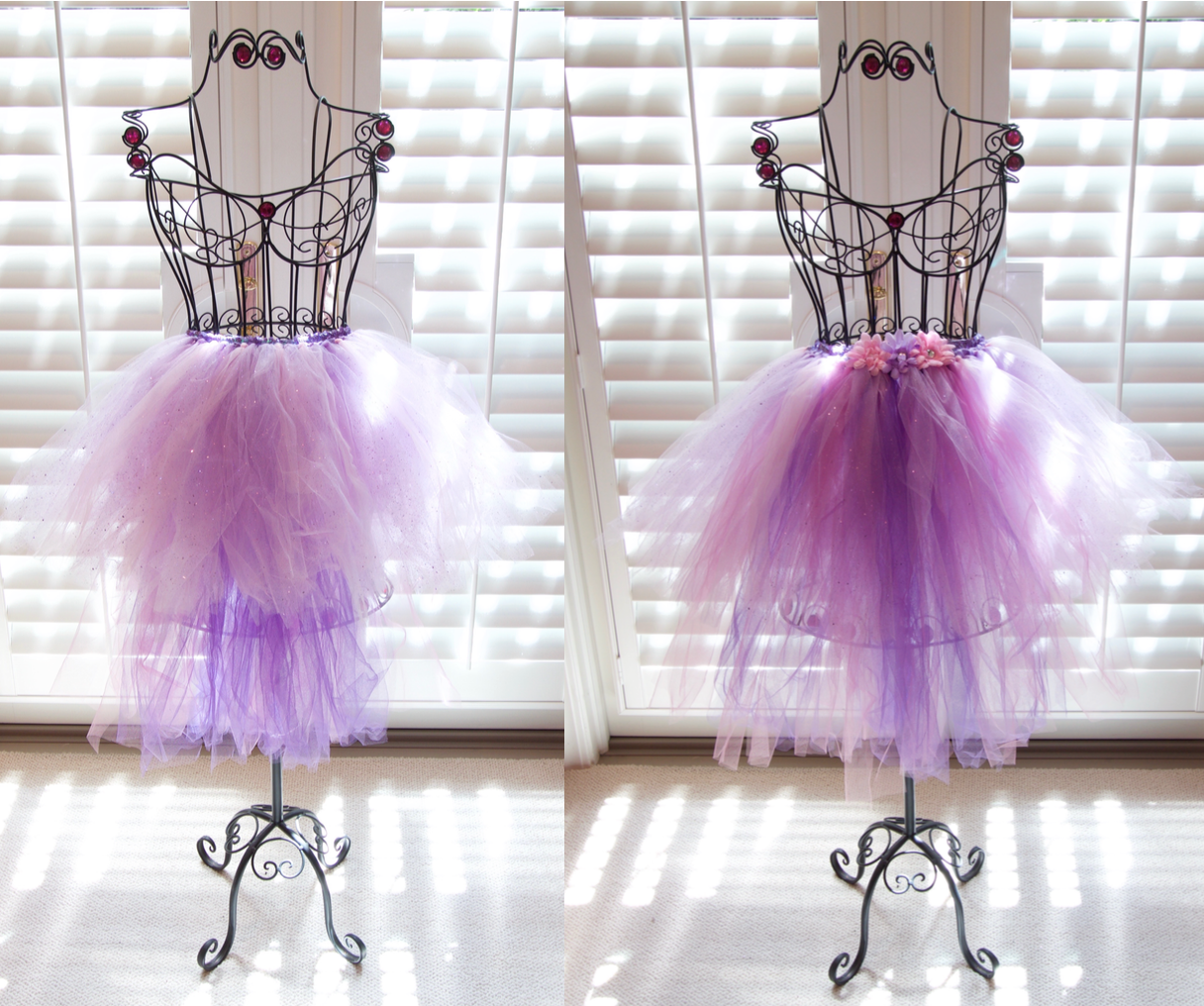
Pink Princess
A little girls’ tutu designed for limitless flouncing and flights of fancy.
This girls’ size tutu skirt is a knee-length confection of white and light pink, with a deeper pink mid-calf length bustle accented. The waistband is iridescent pink sequins, trimmed in the front with five silk flowers in white and pink with large rhinestone centers, in the back with a single pink rhinestone-center silk flower, and will comfortably stretch to fit a waist up to 21 inches.
Pink Princess tutu skirt: Was $23. Now just $16 + shipping!
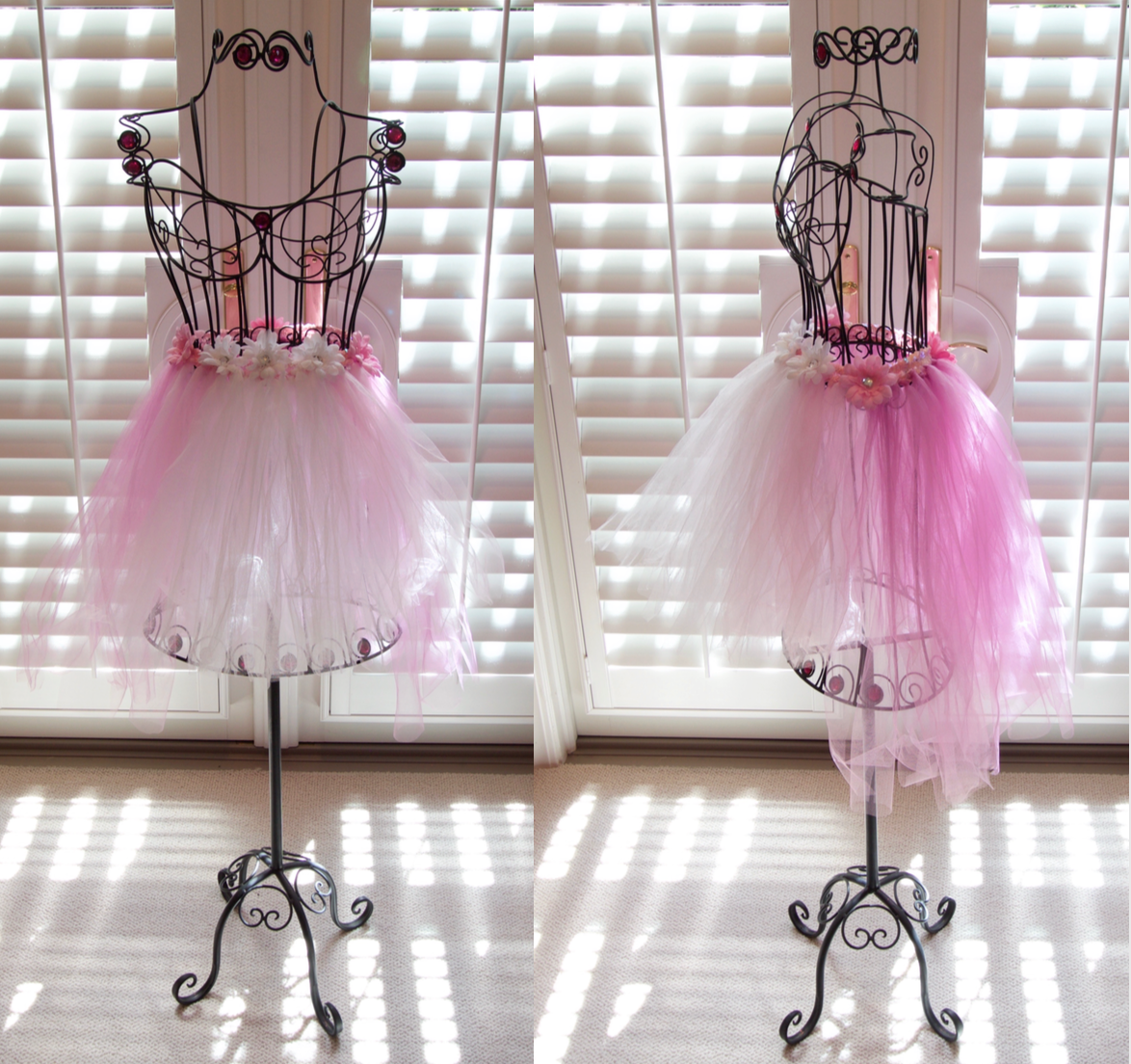
Holiday Baby Dress
A creation to showcase the cuteness of your little bundle of joy at all of your holiday affairs!
The top is woven red tulle and crochet, with a large red and green ribbon bow in front. The skirt is cheerful red petal cuts with a layer of white underneath. The bodice is 4 inches from waist to top, and will comfortably stretch to fit a belly up to 20 inches.
Holiday baby dress: Was $35. Now just $20 + shipping!
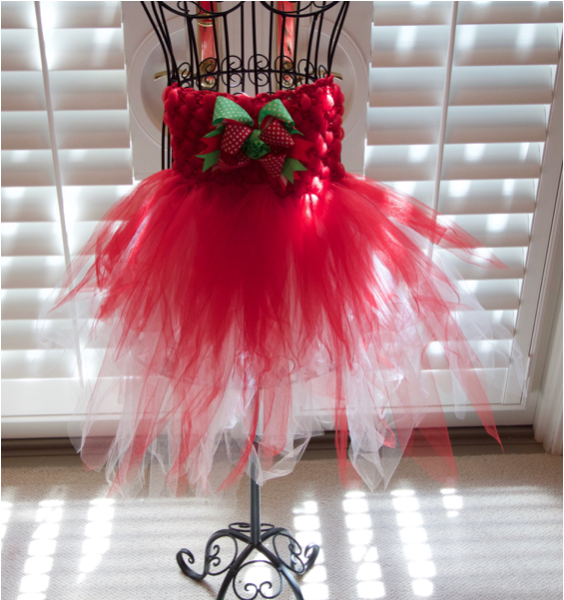
Versatile Girls’ Tutus
Simpler short tutu skirts which can be worn on their own, or to enhance existing costumes.
Magenta petal-cut tulle, with a tiny rhinestone bow trim in front. Can stretch to comfortably fit a waist 18 to 21 inches
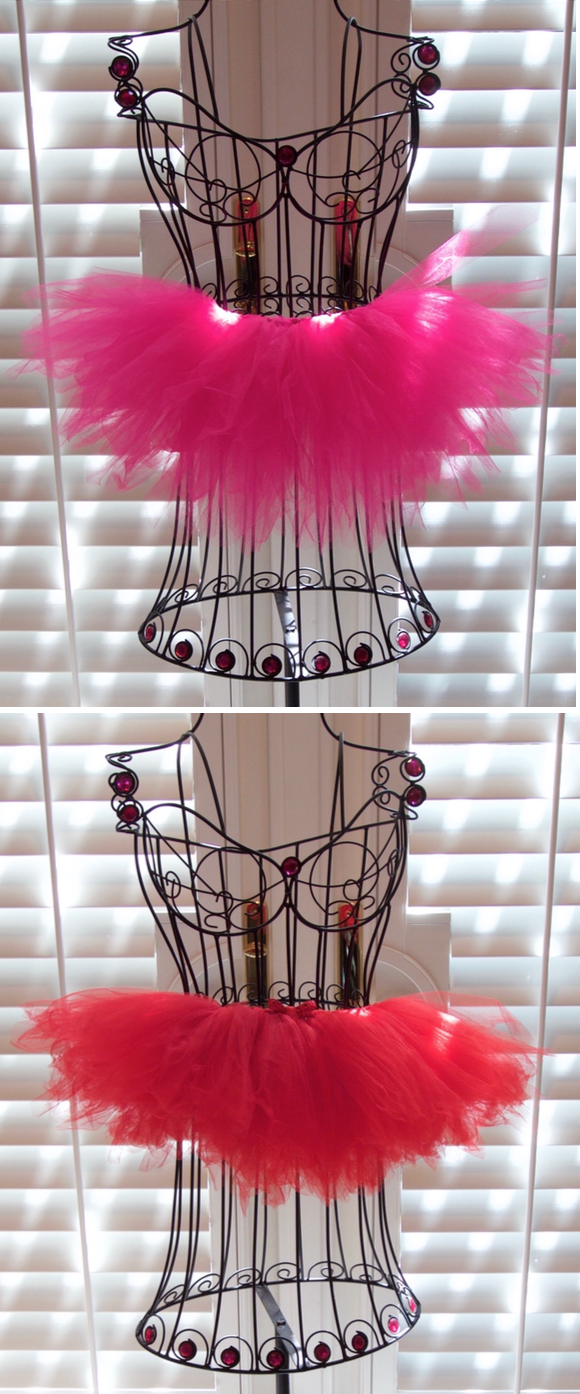
Red tulle of a softer variety, with a tiny rhinestone bow trim in front. Can stretch to comfortably fit a waist 18 to 21 inches
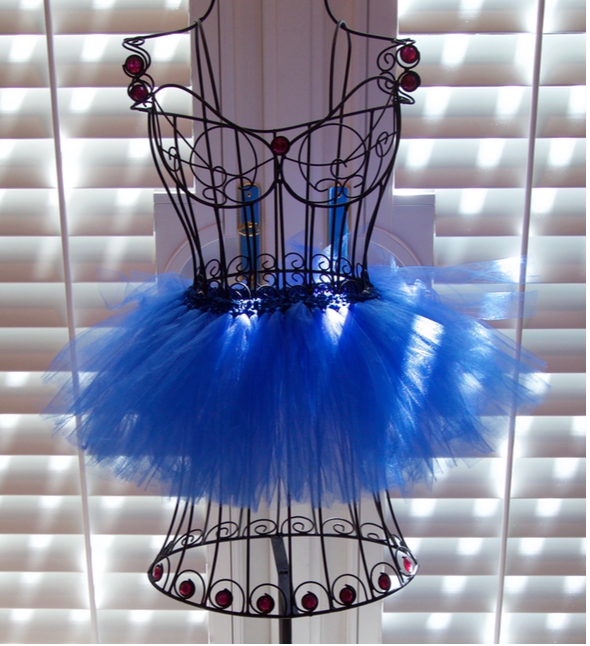
Blue tulle with a soft, light-as-air blue crochet waistband. Can stretch to comfortably fit a waist 22 to 34 inches.
This piece could also work as a adult runners’ tutu!
Tutus for your holiday tree, or for yourself!
These billowing tutus are the perfect length to grace a holiday tree, or to be playful knee-length party skirts.
They have elastic waistbands, and close in the back with adorable ribbon ties. Each can stretch to comfortably fit a waist up to 30 inches.
Holiday tree/party skirt tutus: Were $27 each. Now just $18 each + shipping!
Please note, the tutus appear see-through in the photos due to the background sunlight, but in fact they offer dense coverage.
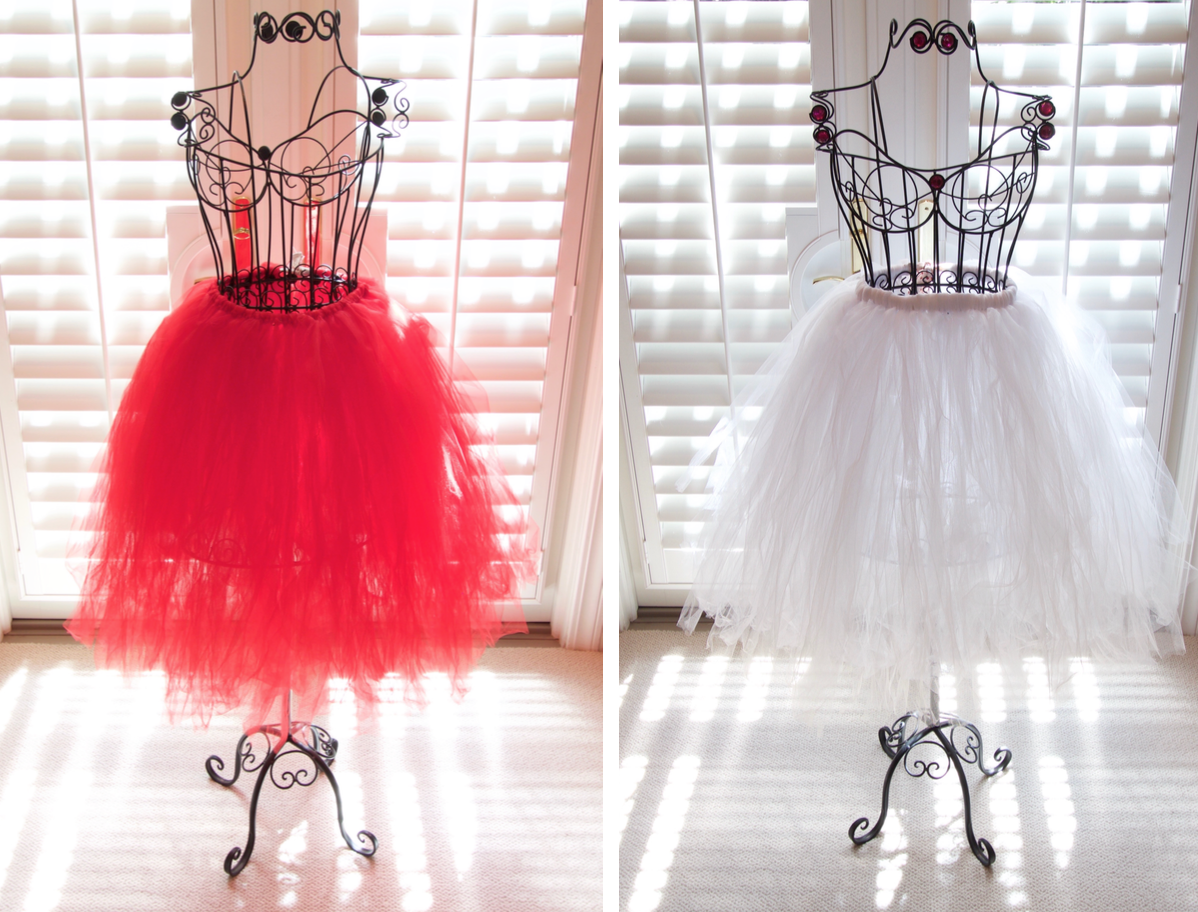
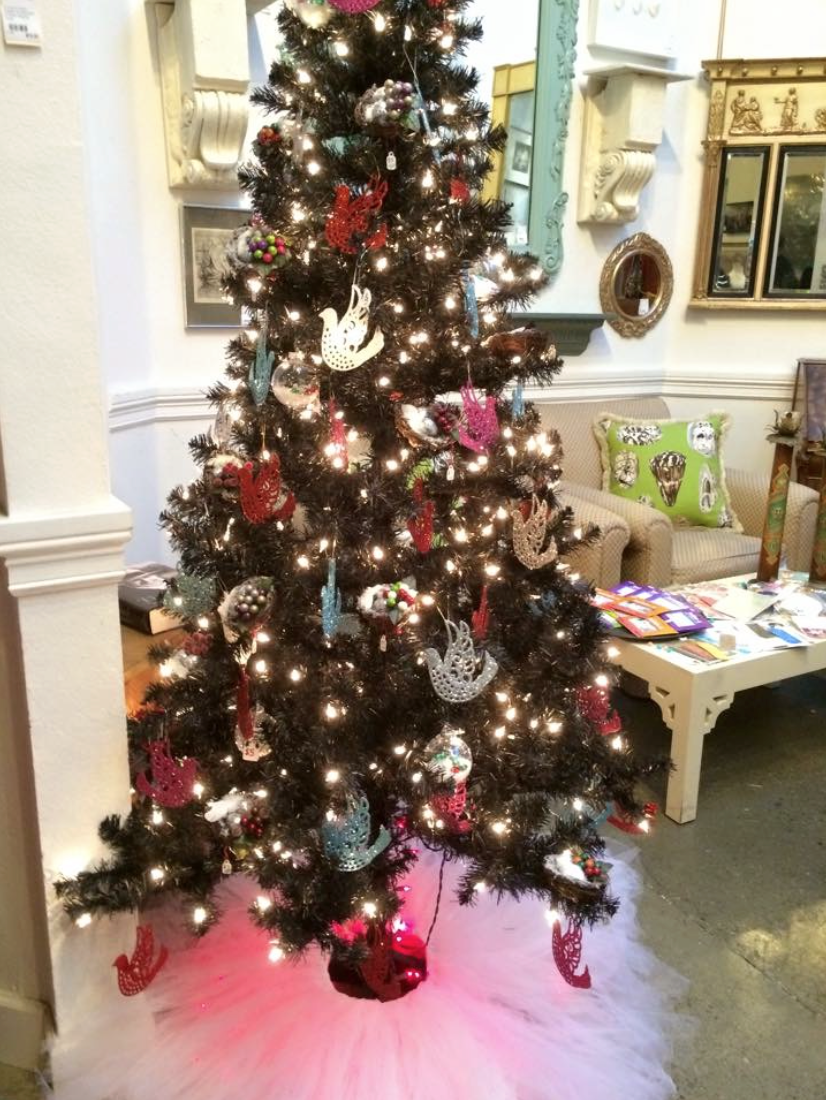
Please contact Christiana at christianadove13@yahoo.com to place an order or ask any questions.
Christiana also gladly takes custom orders all year round, for people and pets (including pigeons), and as always, 100% of proceeds are donated to Palomacy.
Please feel free to tell your friends about this sample sale. It’s simple to share with the button below.
Thank coo so much for looking!
